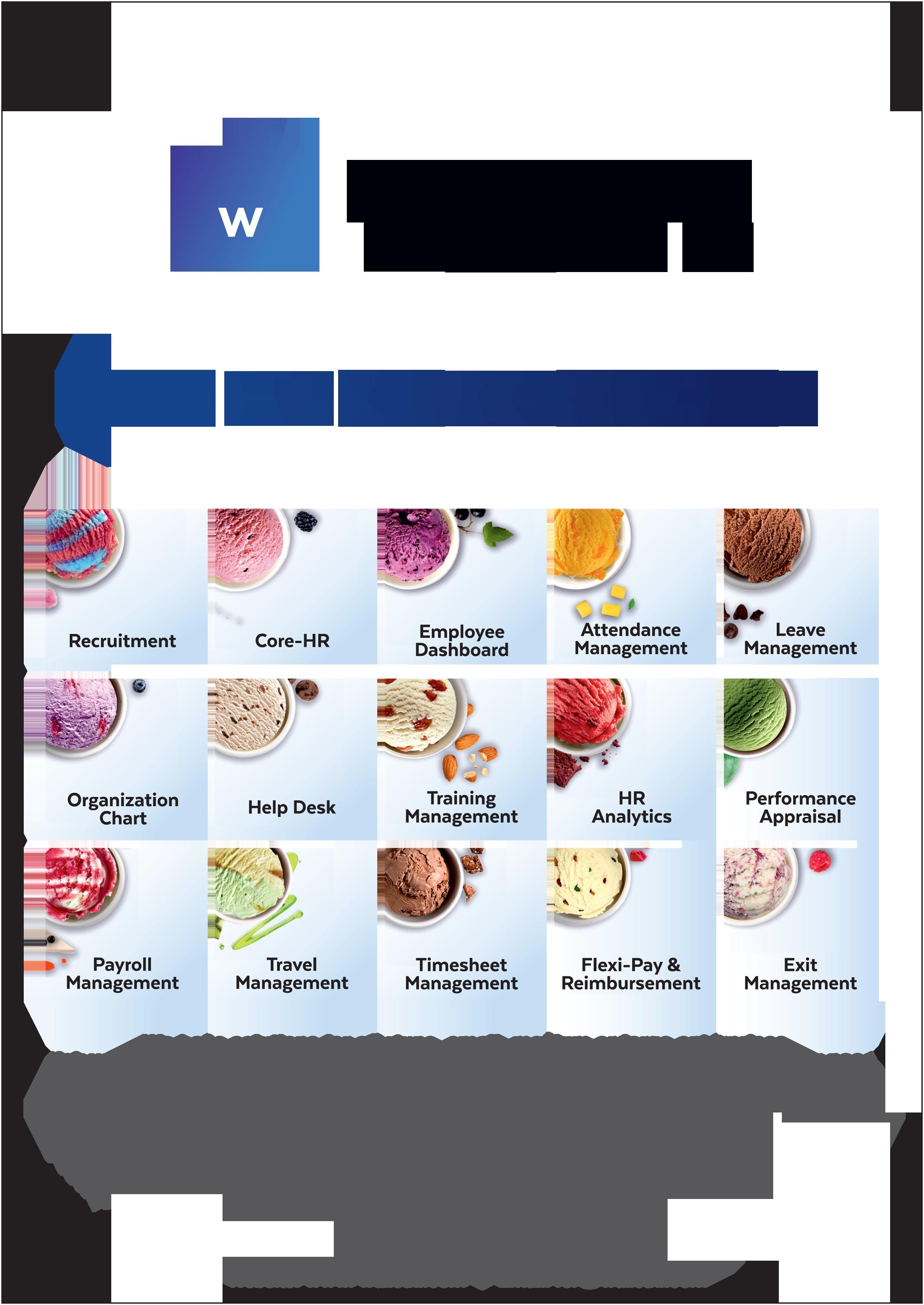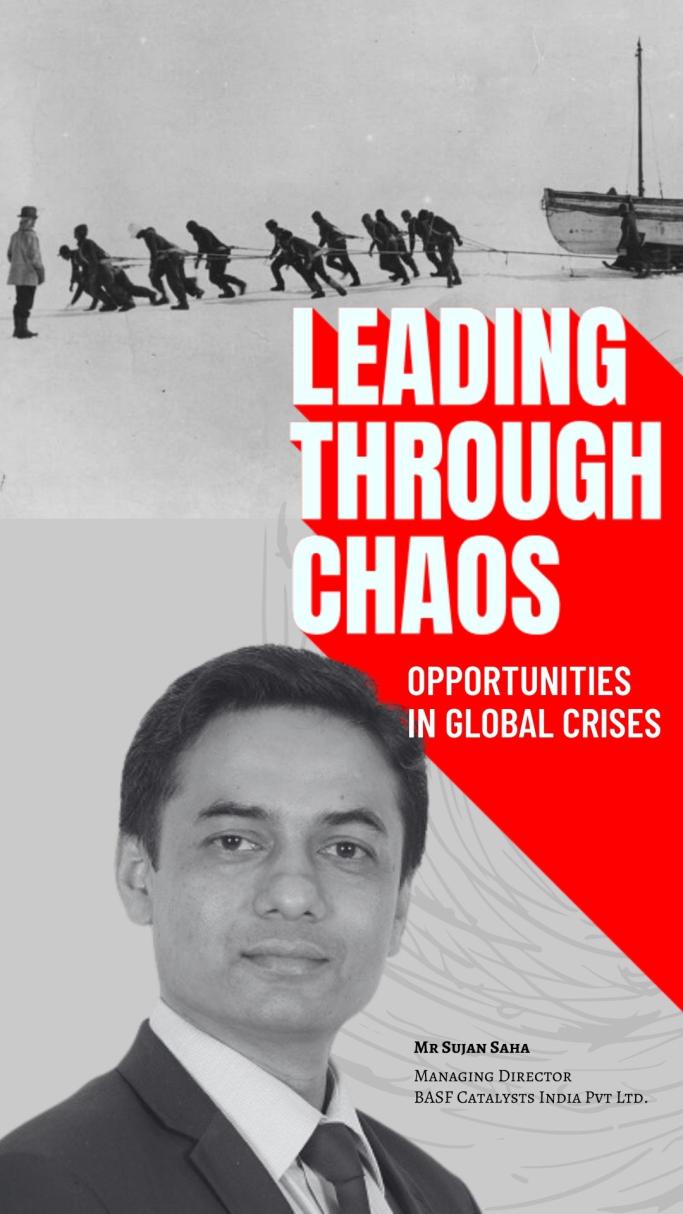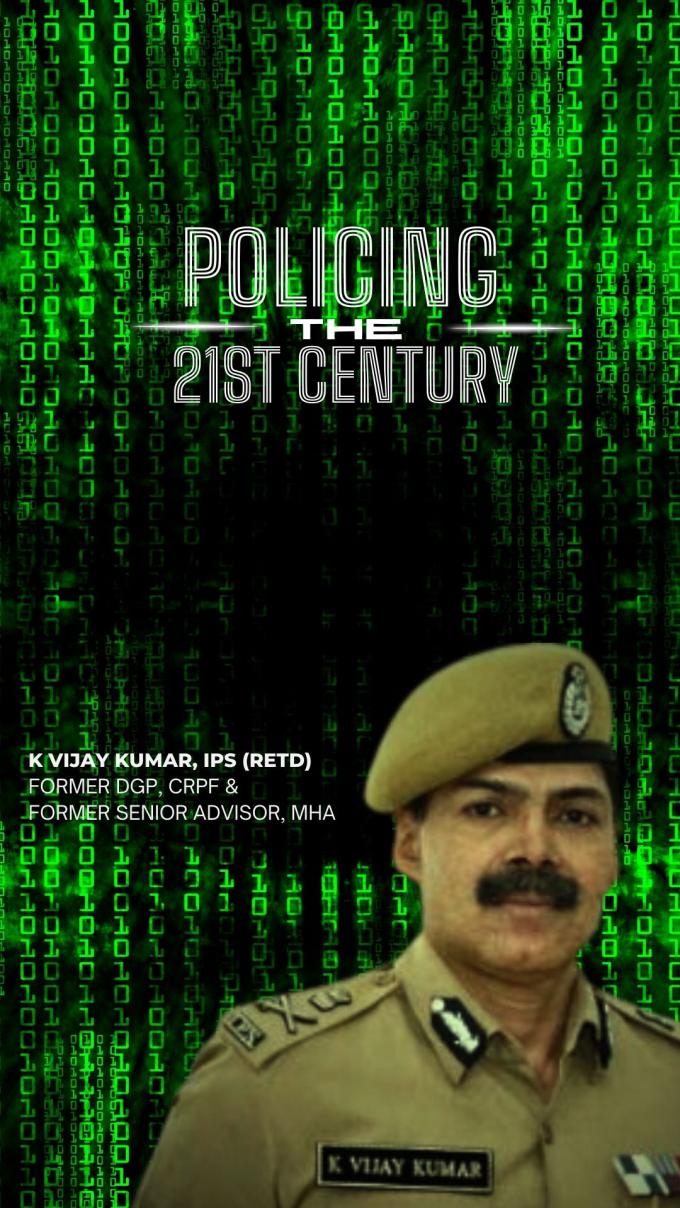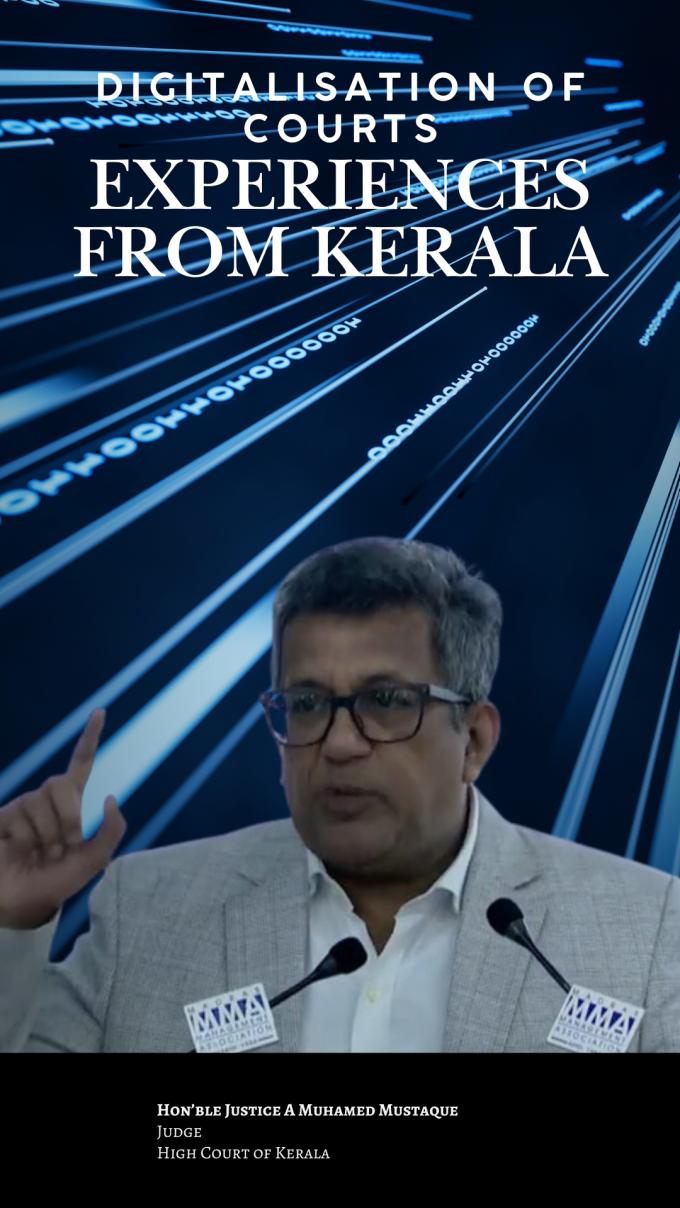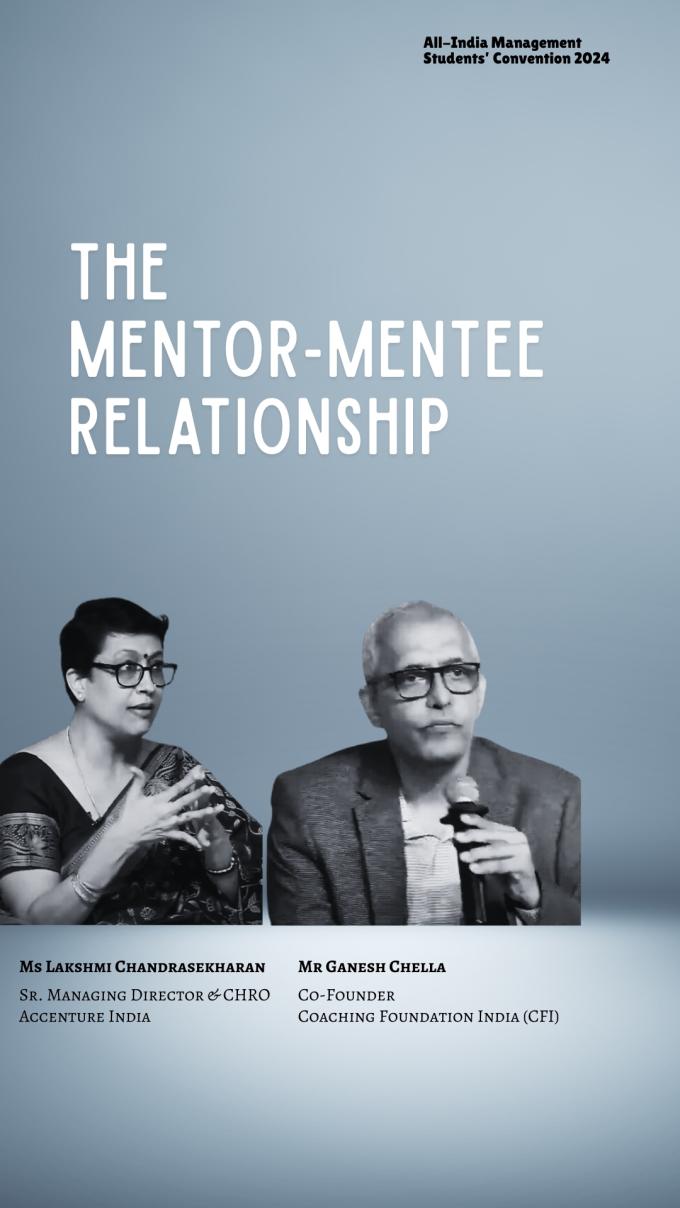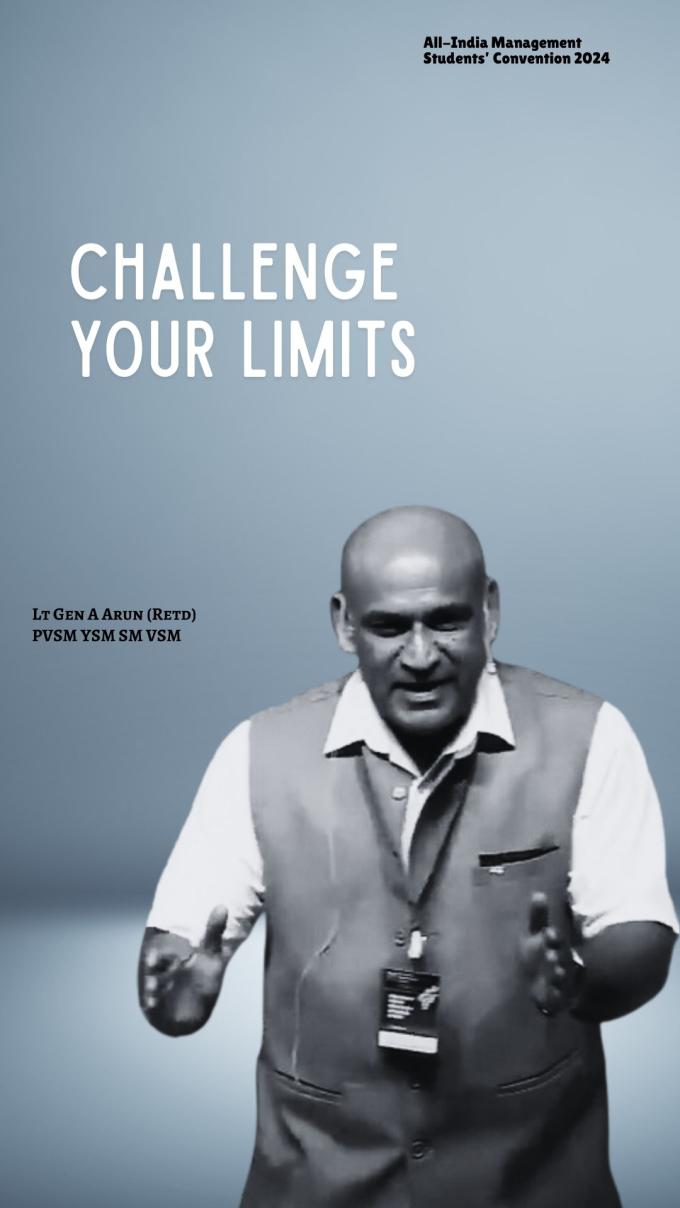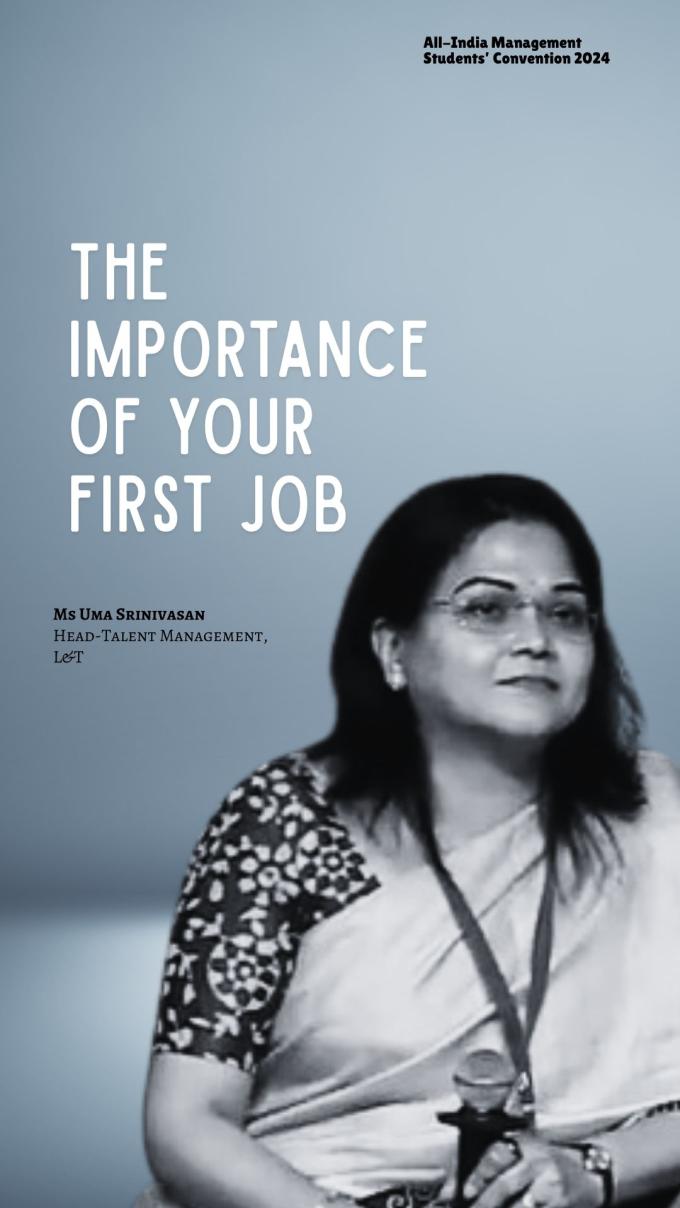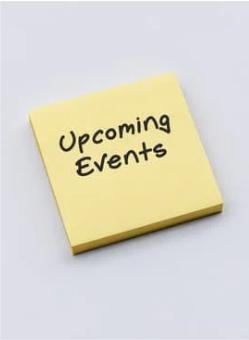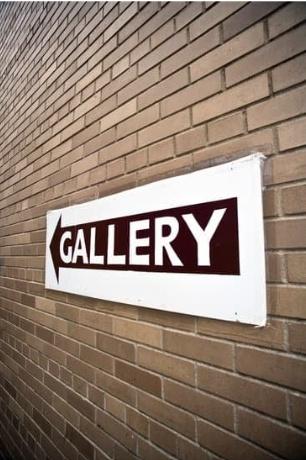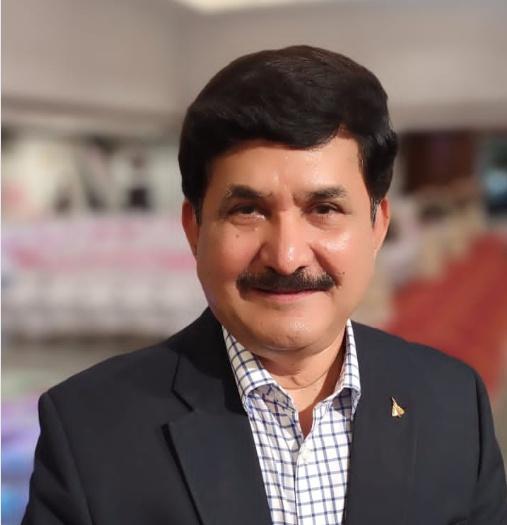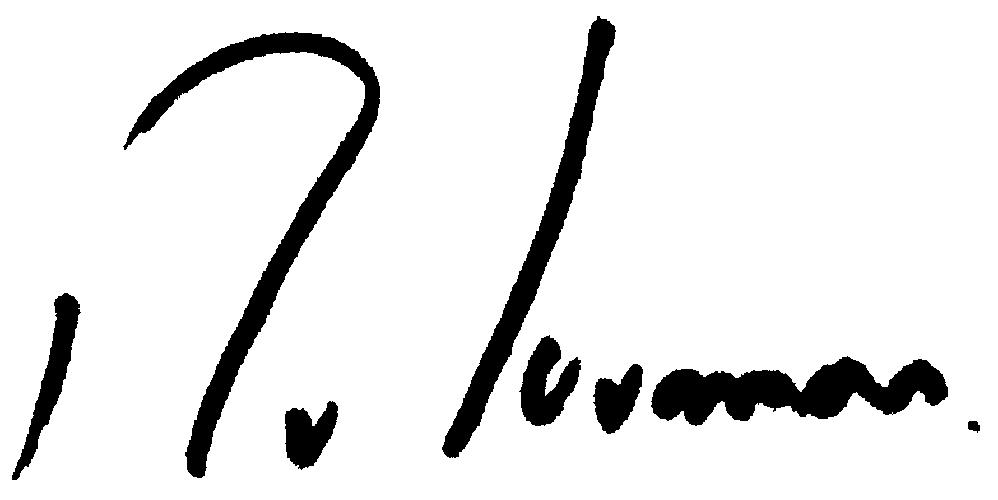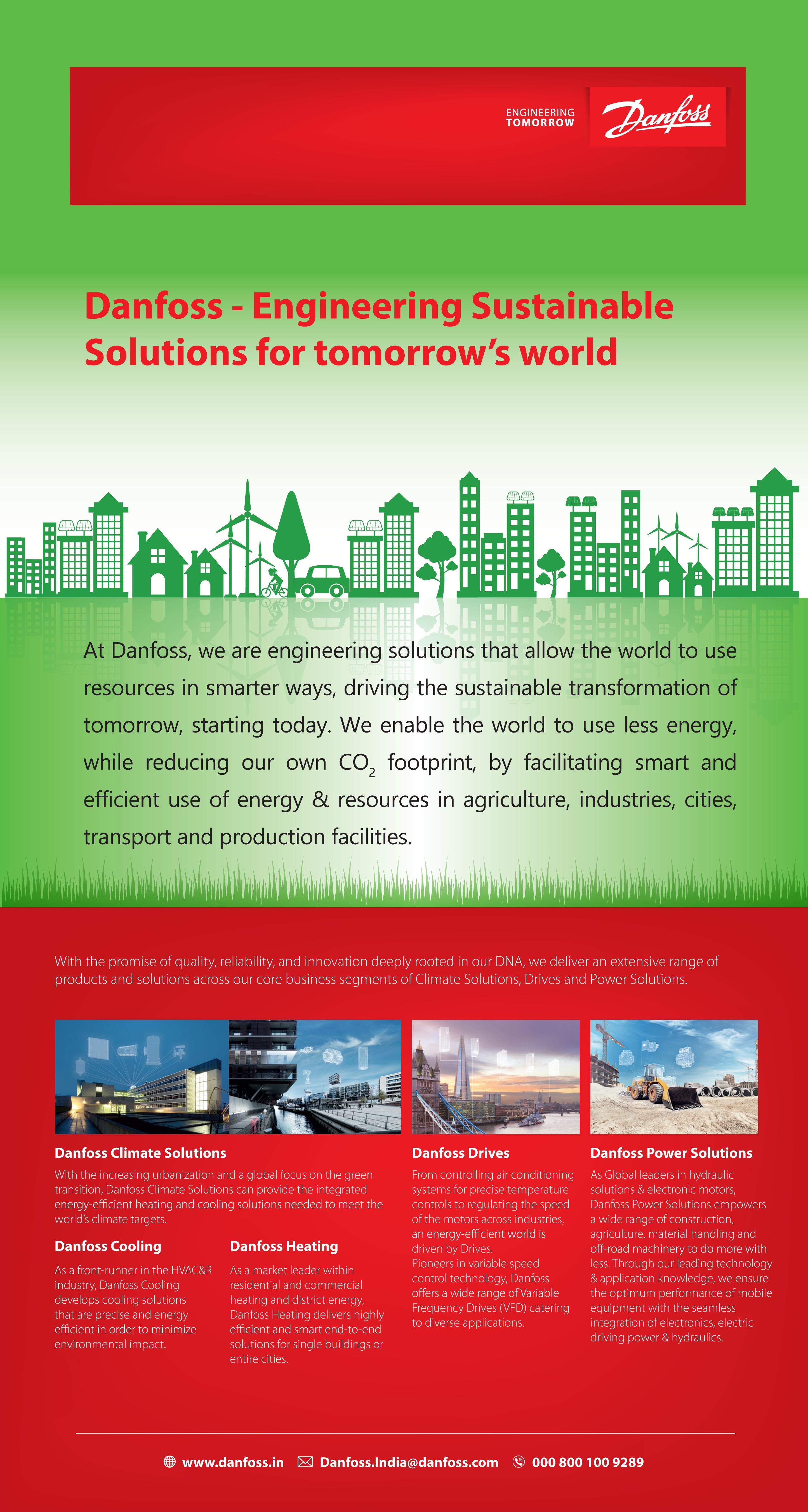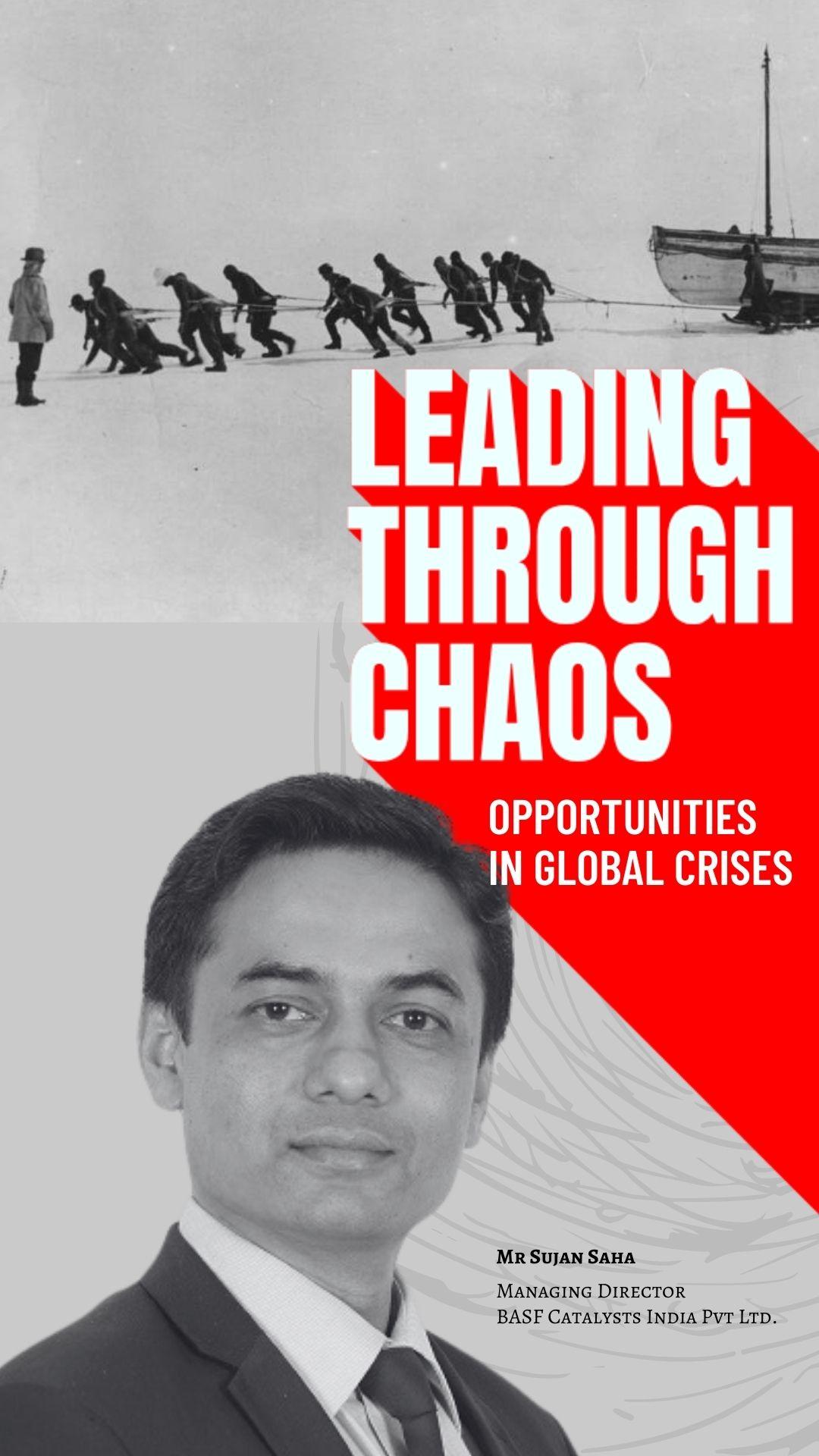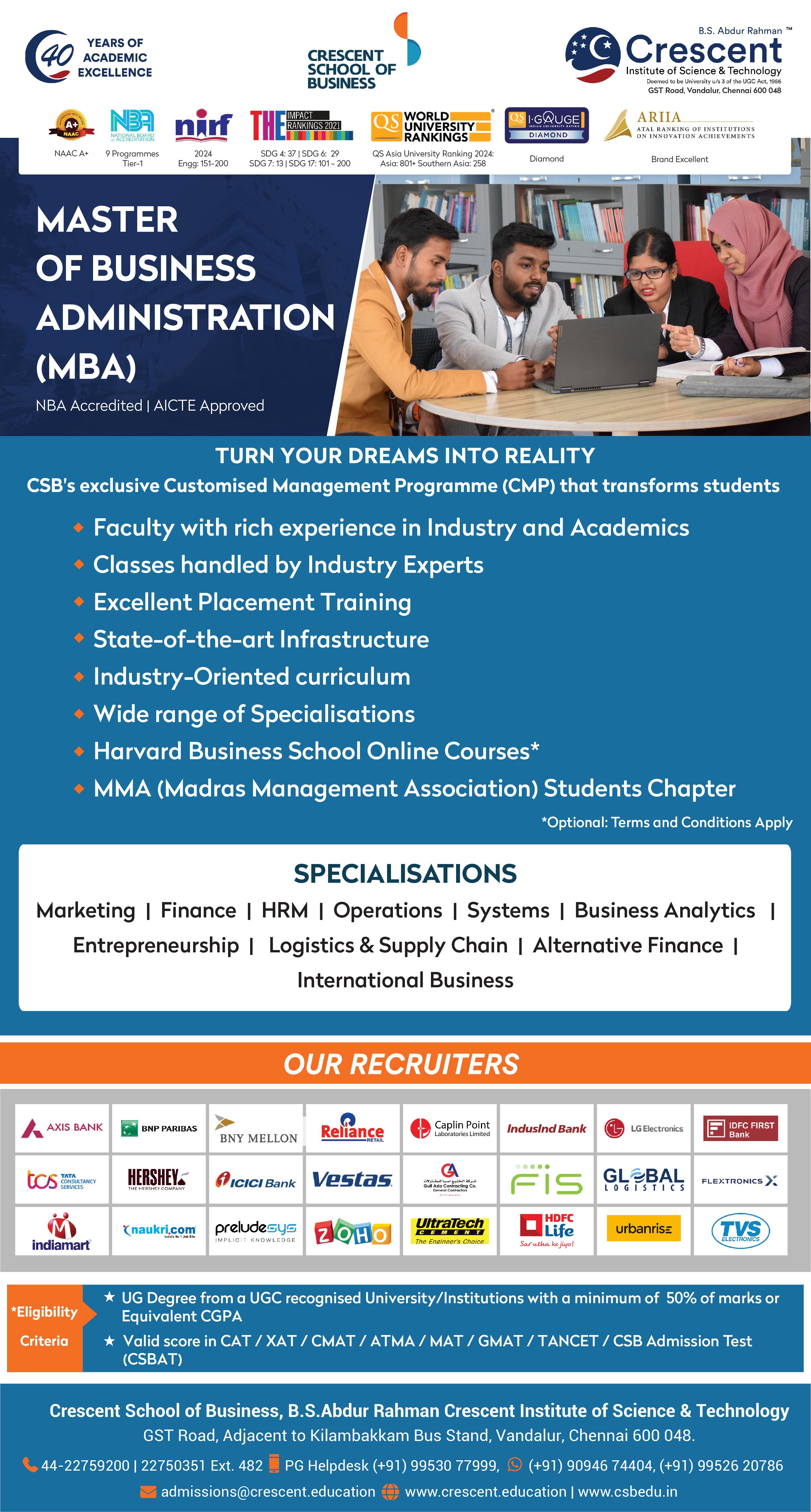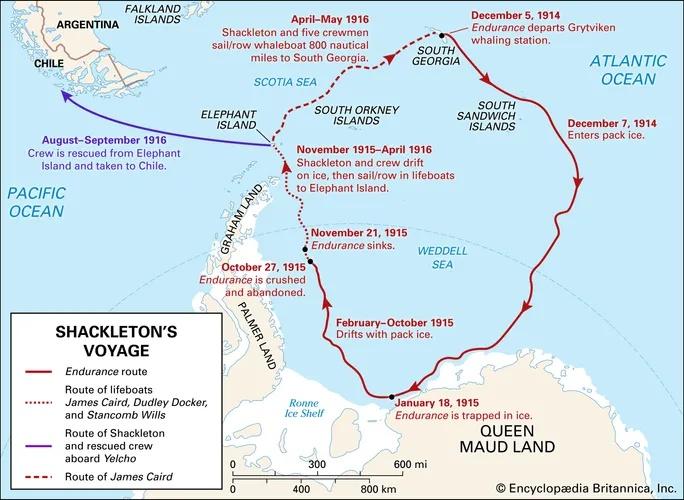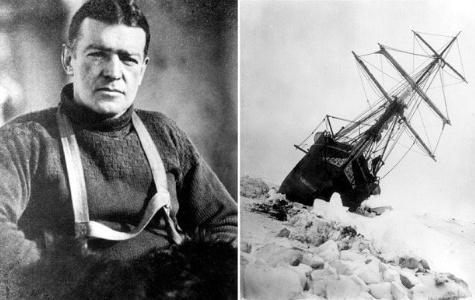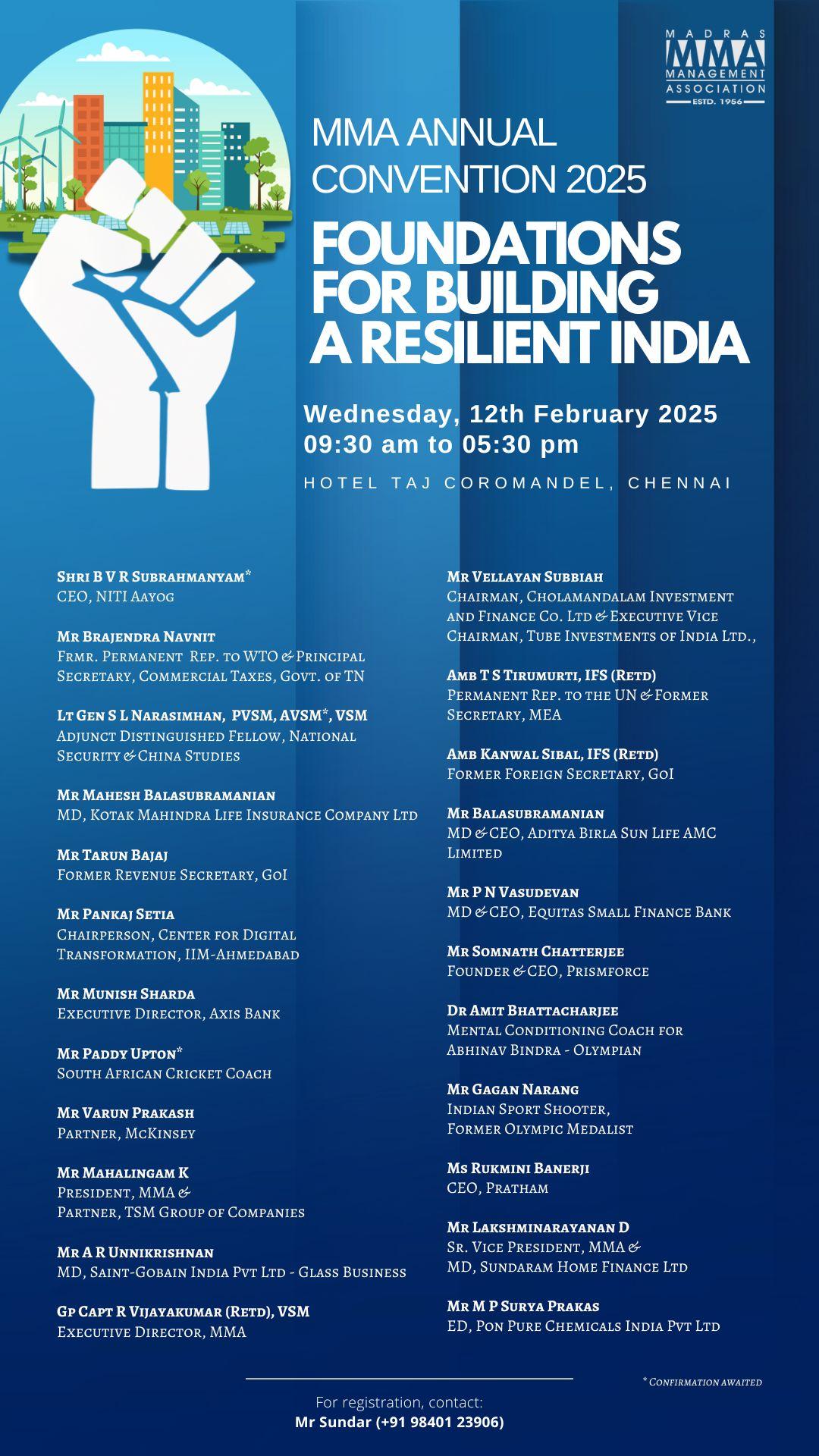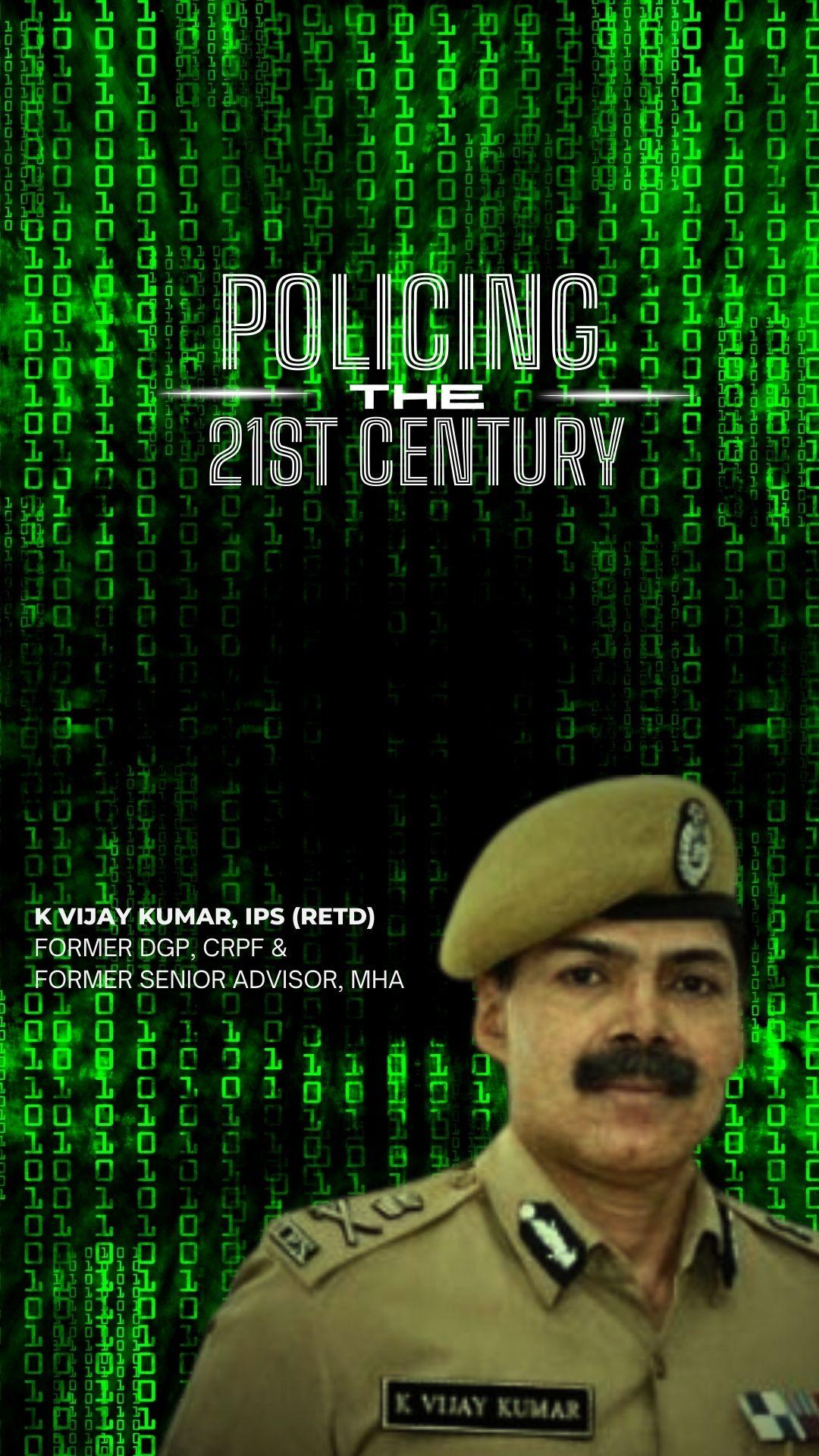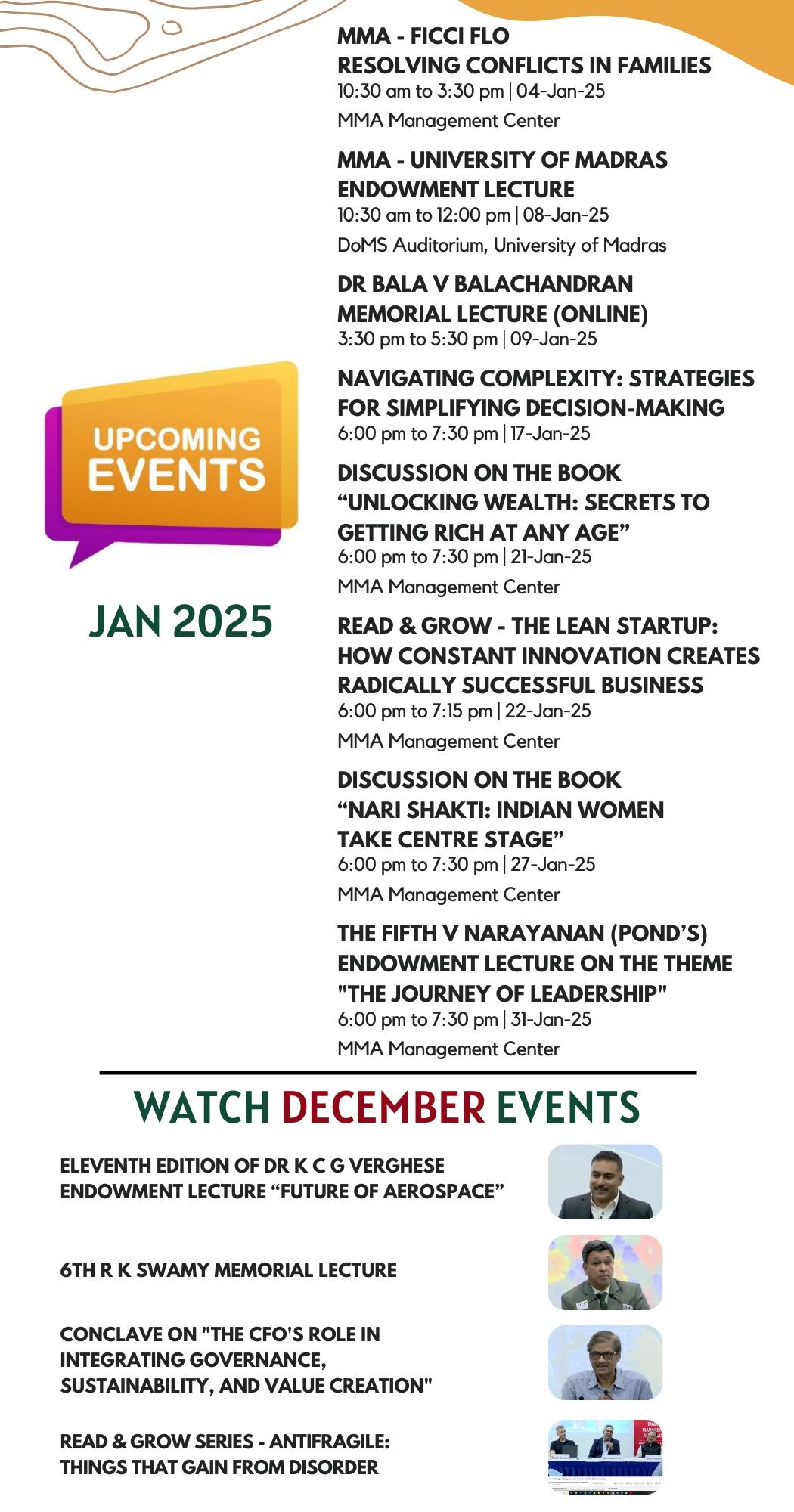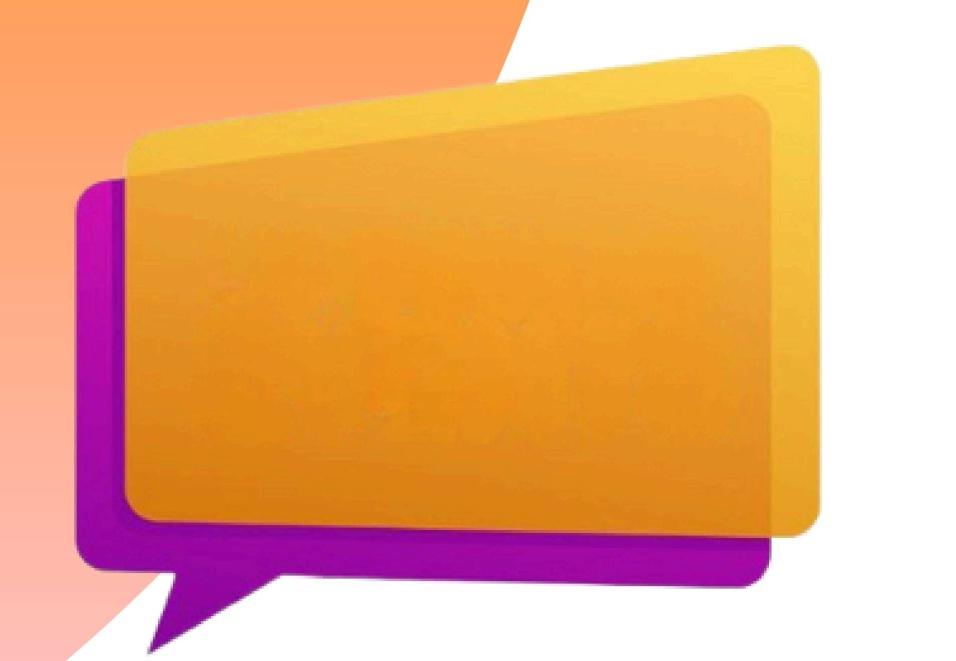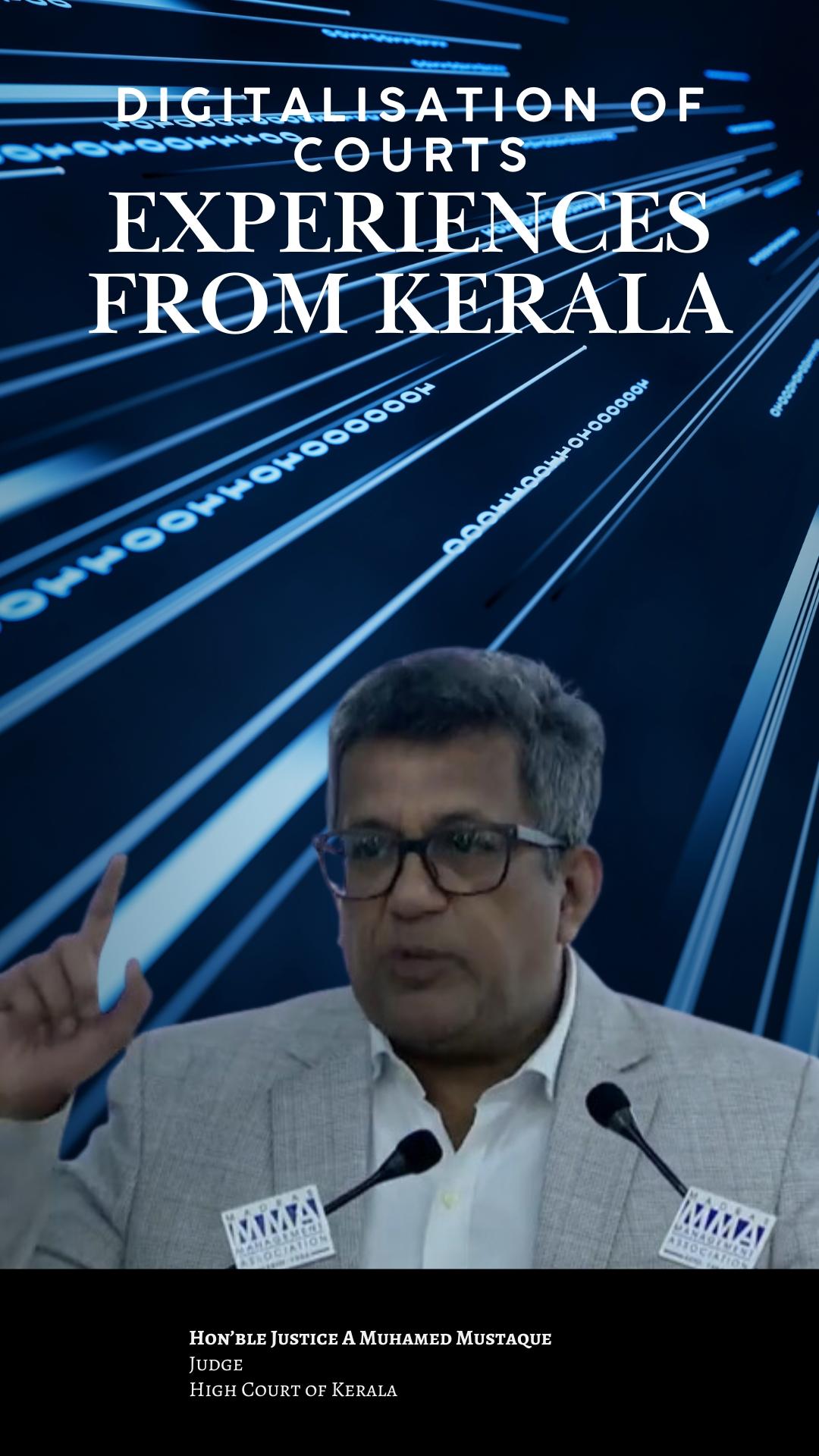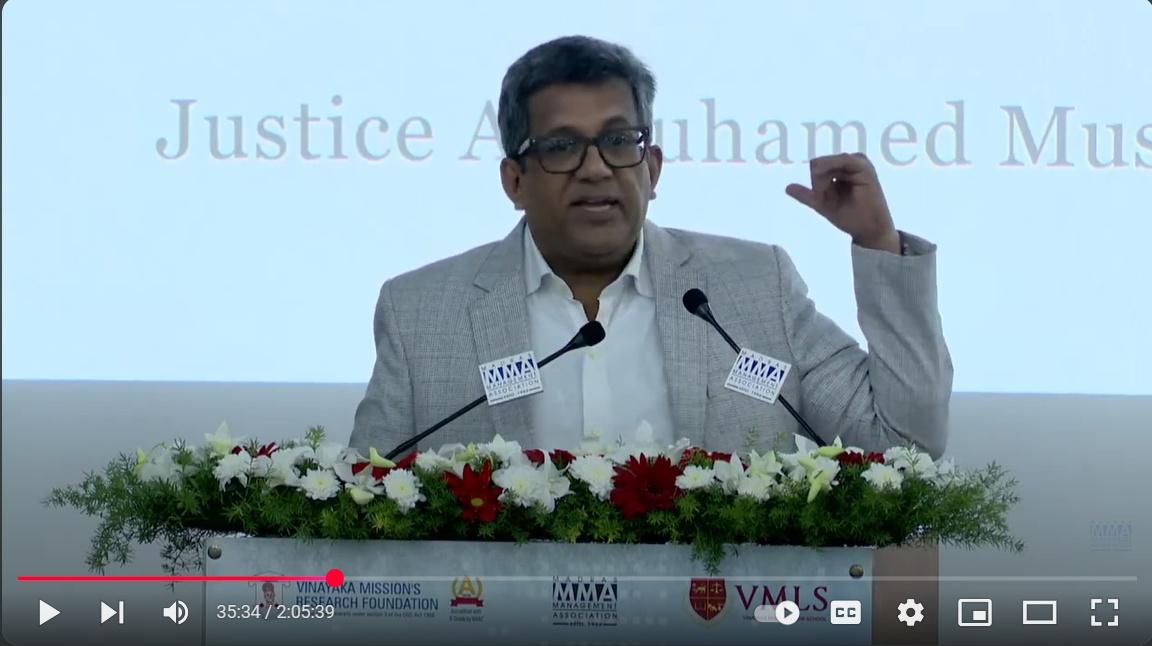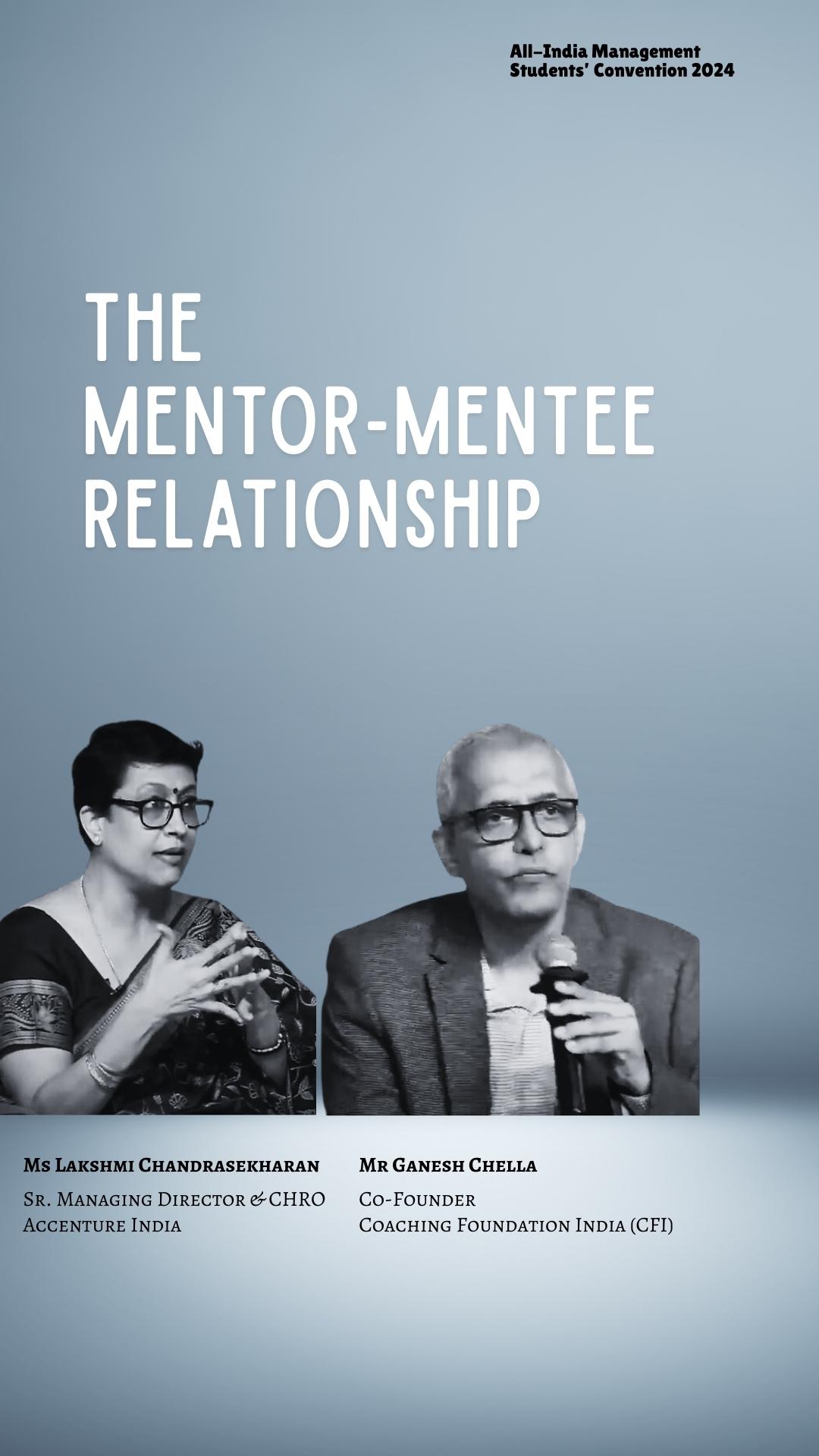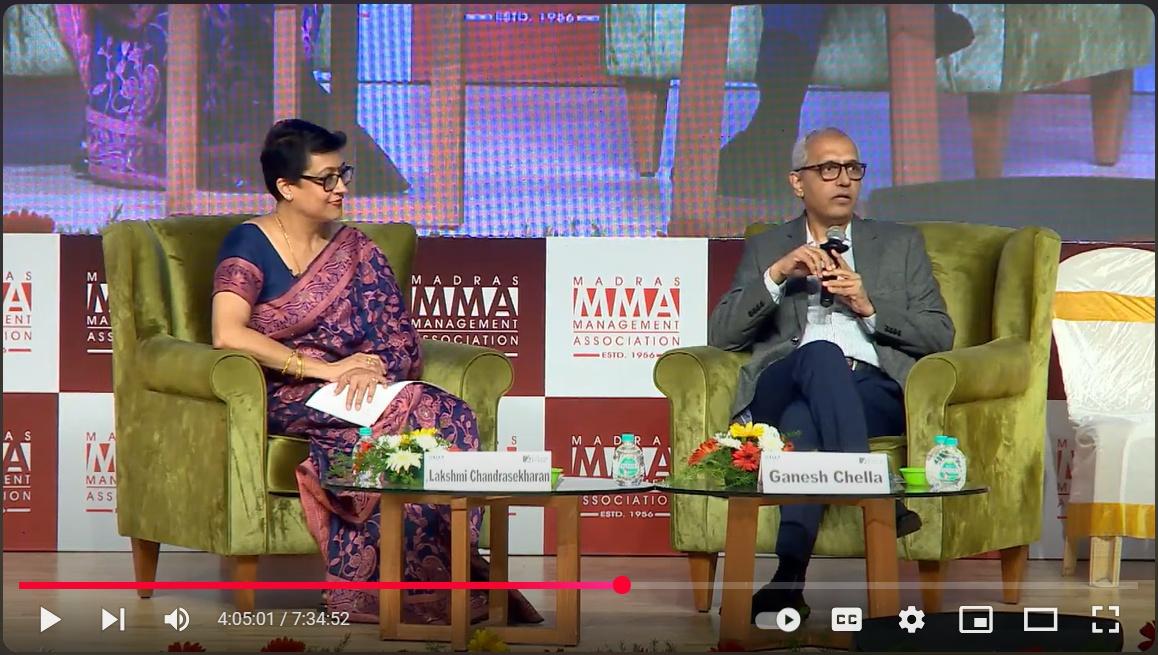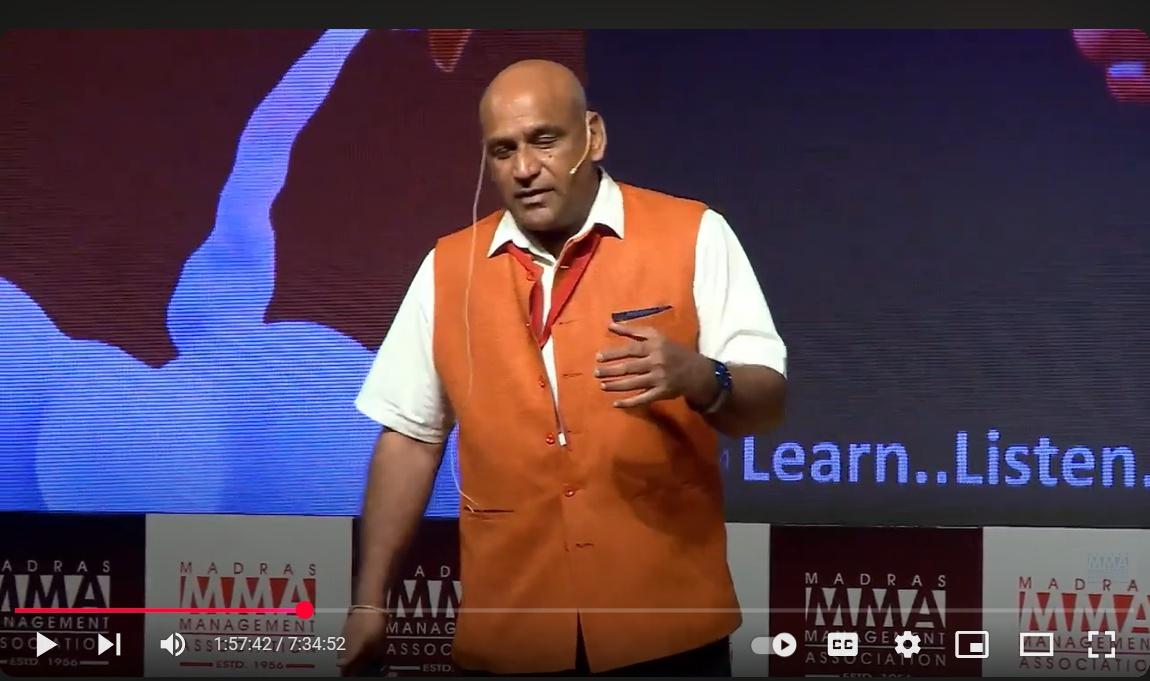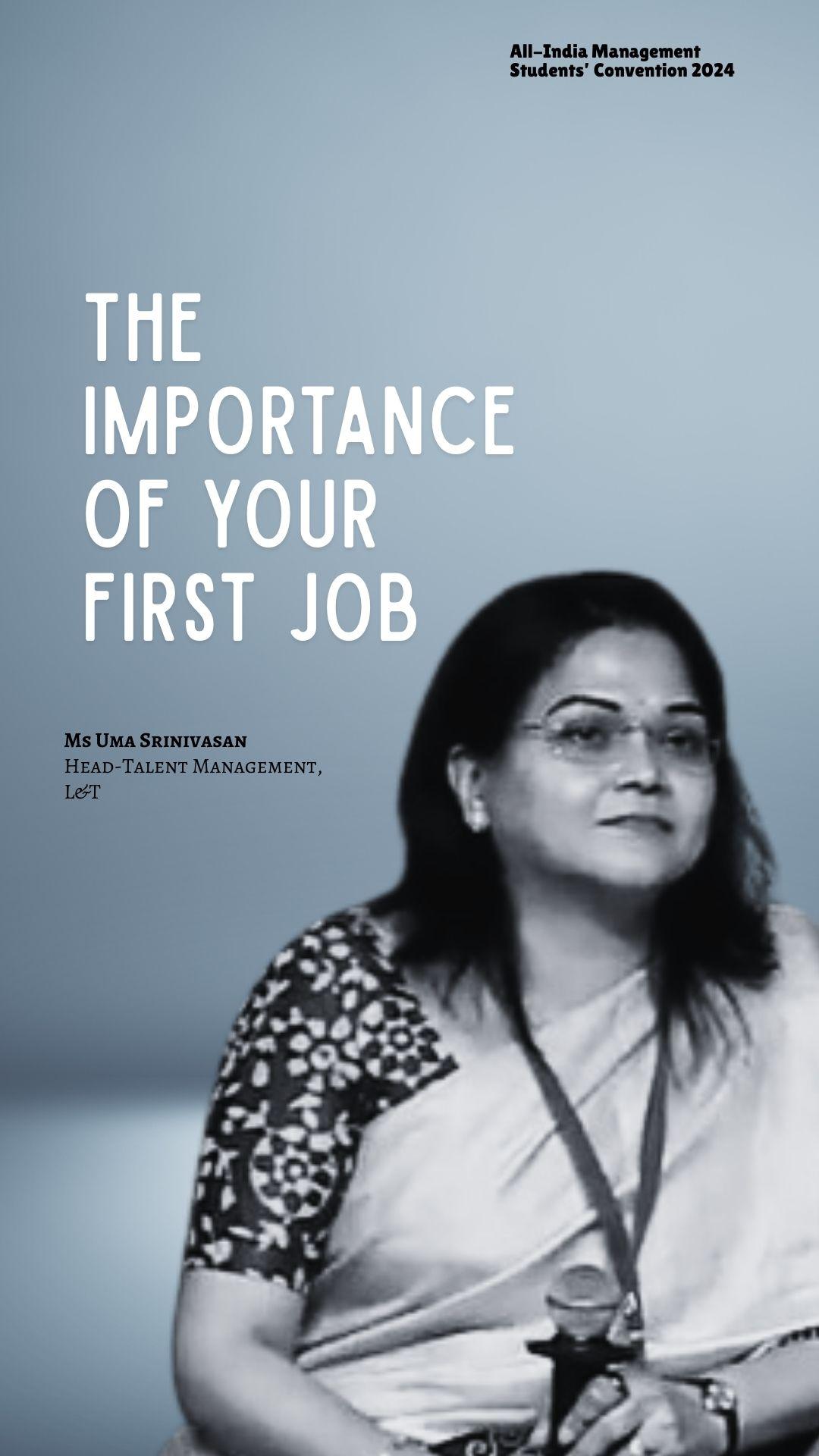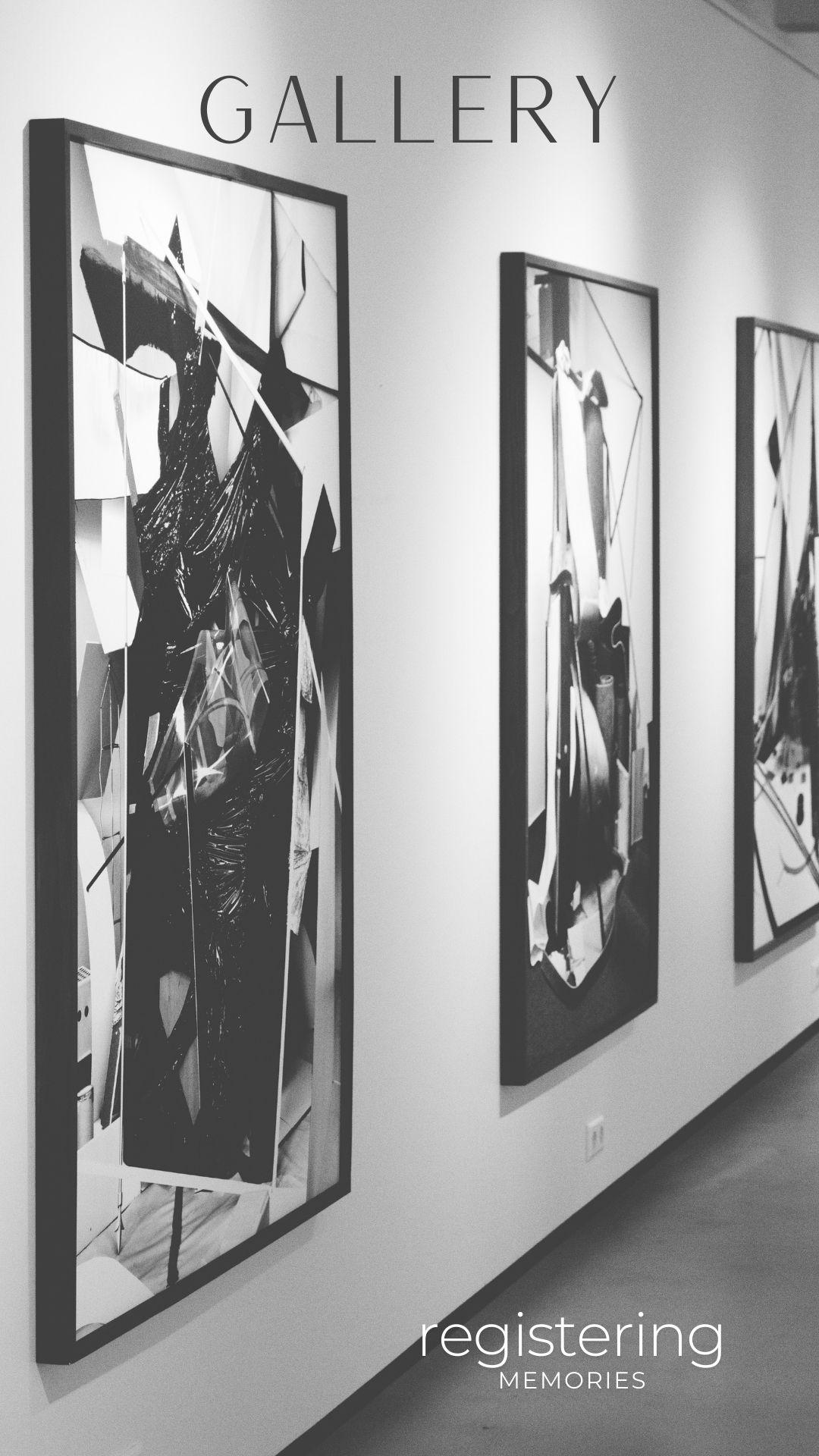Ringing in Hope and Opportunity!
As we enter the new year, we reflect on the past 12 months. It has been another momentous year, marked by a flurry of management activities designed to drive growth, improvement, and success.
We are proud to say that our efforts have paid off, and MMA has remained a relevant and vital force among management professionals. This achievement would not have been possible without the unwavering support of our members.
We extend our sincere heartfelt gratitude to every one of you. Your participation, engagement, and enthusiasm have been the driving force behind our
Gp Capt R Vijayakumar ﴾Retd﴿, VSM
Once again, thank you for your support and commitment to MMA. We wish you and your loved ones a joyous and peaceful New Year 2025, and we look forward to an even more successful and fulfilling year ahead. accomplishments. We are honoured to have such a dedicated and passionate group of members as part of MMA.
As we look to the future, we are excited to build on the momentum of the past year. We will continue to work tirelessly to address the needs and concerns of our members and to promote the values and principles that have guided us thus far.
Once again, thank you for your support and commitment to MMA. We wish you and your loved ones a joyous and peaceful New Year 2025, and we look forward to an even more successful and fulfilling year ahead.
YOUR ACTION BOARD FOR 2025
The new year arrives with abundant hope and a renewed determination to transform our vision into reality. While traditional vision boards decorated with inspirational quotes have been a staple for manifesting-dreams, they often lack a structured approach to achieving those aspirations.
Enter the Action Board, a modern evolution grounded in cognitive psychology and intentional planning. Unlike conventional vision boards, action boards focus on actionable steps, offering a clear and practical path toward sustainable change. They enable
us to not only visualize the future we desire but also inspire purposeful actions to bring those dreams to life. As 2025 unfolds, it’s the perfect time to embrace this dynamic tool. Don’t wait start creating your action board today! Take that first small but intentional step toward your goals and make 2025 your year of achievement and growth.
MMA ANNUAL CONVENTION 2025
The future of business is not what it used to be. Radical changes in the business environment and technologies are creating new winners and losers. India is entering 2025 on a confident note with high growth and moderating inflation. Optimism is in the air, and our focus should move to growth that’s more broad-based and inclusive.
In today’s unpredictable global landscape, building a resilient India is essential to achieving our vision of Viksit Bharat. In previous conventions, we have explored various aspects of India @2047, including nurturing talent, fostering innovation, and enabling business growth. As we navigate an increasingly complex world, resilience has become the cornerstone of progress. Building a resilient India demands a multi-dimensional approach that addresses the dynamic geopolitical environment, empowers small and medium enterprises, strengthens technological and skill adaptability, prioritizes mental health, and ensures inclusive growth that bridges urban and rural divides. By focusing on these critical foundations, we can equip India to thrive in the face of challenges and realize its aspirations for the future.
The MMA Annual Convention on “Foundations for Building a Resilient India,” scheduled to be held on Wednesday, 12th February 2025, at Hotel Taj Coromandel, Chennai, promises to be an insightful event. It will delve into strategies for strengthening India's resilience across critical dimensions, enabling the nation to leapfrog into the future. The convention will also offer practical insights to help businesses remain agile and resilient amidst evolving challenges.
I would like to take this opportunity to extend my heartfelt congratulations to Mr. Lakshminarayanan, Chairman, Convention Committee, and the Convention Committee Members, along with our Knowledge Partner, McKinsey & Company, for their tireless efforts over the past few months to organize an exceptional convention featuring outstanding speakers.
The participation fee has been highly subsidized for MMA Members, making it an excellent opportunity to benefit from this premier MMA event. Kindly take advantage of this offer and register now to confirm your seat.
Click here to view the convention details and to register.
THE SILENT THREAT: COMBATTING BRAIN ROT
Recently, Oxford University Press selected “Brain
Rot” as the word of the year, surpassing other contenders like “Demure” and “Dynamic Pricing.” The choice was made based on widespread usage and public voting after shortlisting. I’m not surprised by the outcome. This term reflects the times we live in a period dominated by our ever-increasing immersion in the virtual world.
"Brain Rot" is not a medical diagnosis or condition but a slang term that has gained prominence in recent years, particularly in relation to the surge in social media consumption. This endless flow of low-value content contributes little to our lives while significantly eroding our intellectual capabilities and mental health. What begins as a quick scroll of 10–15 minutes on social media often spirals into an hour or more without our notice. This binge consumption leaves us feeling overwhelmed, mentally exhausted, and distracted. It fogs our thinking, shortens our attention spans, and lowers our patience with realworld interactions. While many of us recognize this addiction or “Brain Rot” and understand the steps needed to address it, the real challenge lies in taking action. I urge you to start small: try avoiding your phone for 30 minutes before bedtime. Gradually, you can extend these time limits and develop healthier digital habits. By taking these simple steps, you can remain agile, mentally sharp, and free from the grip of Brain Rot.
THE FOUR-DAY WEEK: REDEFINING WORK-LIFE BALANCE
Tokyo is poised to offer its administrative staff a three-day weekend. Similarly, Microsoft’s experiment with a four-day workweek in Japan resulted in a
significant leap in productivity, hinting that this may well be the future of work. Given the opportunity, most employees would eagerly embrace a four-day workweek a preference backed by numerous surveys.
A better balance between work and life is shown to relieve stress, boost job satisfaction, and enhance overall happiness. For India’s workforce, the benefits could be even more profound, considering the challenges of harrowing urban traffic and other daily stressors that office goers face. These factors create the perfect environment to experiment with a four-day workweek, potentially revolutionizing productivity and well-being.
RACING TO SAVE OUR PLANET: TACKLING THE CLIMATE CHALLENGE
The year 2024 is set to end as the hottest on record, marking the second consecutive year of unprecedented global warming following 2023. This escalating heat is driving extreme weather events, leading to significant human and economic losses. In light of this, the world turned its attention to the 29th Global Climate Summit (COP29), held in Baku in November. A key point of discussion was renegotiating climate finance for developing nations that are bearing the brunt of these climate impacts.
Developed countries pledged to mobilize $300 billion annually by 2035 to assist vulnerable nations. However, this commitment sparked further conflict, as developing countries demanded $1.3 trillion a year. The United Nations Conference on Trade and Development (UNCTAD) estimates that developing
The world has become more complex and dynamic. As James Casio calls it: the “BANI” world.
nations require trillions of dollars in additional investment for both climate adaptation and mitigation. The true test of these contentious agreements will come in February 2025, when countries are expected to submit their updated Nationally Determined Contributions (NDCs) strategic climate action plans aimed at achieving a netzero future. The ambition and feasibility of each country’s plan will be directly tied to the financial resources available. As 2025 unfolds, India’s response to the climate crisis will not only test its own resilience but may also serve as a model for other developing nations grappling with similar challenges.
THE ART OF LEADERSHIP: THRIVING IN COMPLEXITY
The world has become more complex and dynamic. As James Casio calls it: the “BANI” world. It’s an acronym that reflects the world being Brittle, Anxious, Non-linear and Incomprehensible. Organisations indeed face multiple challenges and opportunities triggered by various crises. These turbulent instances push businesses into a whirlwind of novel situations and, therefore, it is critical for leaders to develop specific skill sets so that they can sail through and thrive in ambiguous situations. In this context, I am delighted to present in this issue three thought provoking articles insights shared by
outstanding leaders at MMA Challenge your Limits by Lt Gen A Arun; Leading through Chaos: Opportunities in Global Crisis by Mr Sujan Saha; and The MentorMentee Relationship by Mr Ganesh Chella. Please read on and get inspired. Click on the link provided in the article to watch the video.
MMA CFO FORUM: A NEW PLATFORM FOR FINANCIAL LEADERSHIP
I am delighted to share about the launch of the MMA CFO Forum, a significant milestone unveiled during the recent CFO Conclave. This exclusive platform is dedicated to fostering dialogue and collaboration among financial leaders. It aims to provide CFOs across industries with the opportunity to exchange insights, discuss emerging challenges, and share best practices that drive strategic decisionmaking. The launch underscores MMA's commitment to empowering finance professionals with cuttingedge knowledge and tools to navigate the complexities of today’s dynamic business environment. By addressing critical topics such as corporate governance, sustainability, and economic value enhancement, the forum is poised to serve as a hub for thought leadership reinforcing MMA’s role as a catalyst for professional excellence.
Click here to view the detailed concept note.
CHECKMATE TO MEDIOCRITY: GUKESH BECOMES A LEGEND!
At just 18 years old, Mr Gukesh has etched his name in history as the youngest world chess champion, defeating China’s Ding Liren in a
sensational match. His versatile gameplay, built on an extraordinary ability to calculate moves deeply and precisely, stood him in good stead against his seasoned opponent.
The next milestone for this prodigy would be to aim for the heights scaled by the world’s greatest chess player, Magnus Carlsen a challenge that Gukesh seems well-equipped to take on.
Gukesh’s remarkable victory is not only a personal triumph but also a significant boost to the growth and popularity of modern chess as a sport in India.
As always, we would be happy to hear your views, comments and suggestions.
Happy Reading… And a brilliant New Year!!!
Executives will probably name vision, honesty, or the ability to execute change as qualities of a leader in times of crises However, there is a lot more to it, says Sujan Saha,
Managing Director, BASF Catalysts India Pvt Ltd
In our lives, whether on a small, medium, or large scale, we all encounter crises. None of us, as individuals, part of organisations, societies, or countries, are insulated from these challenges. Today, I'll discuss how these crises are interconnected and how we, as leaders, individuals, members of society, or parts of organisations, should act in response.
The origin of the word ‘crisis’ is quite interesting. It comes from the Greek word ‘krisis,’ which means ‘decision’ or ‘action.’ Understanding this can change how we view crises. They're not just about challenges but about the critical decisions we must make.
As individuals, none of us are insulated from global crises. Some crises are familiar to us such as pandemics. Before COVID-19, there were other pandemics, although their scales varied. We've also faced trade wars between countries, impacting businesses significantly. Trade policies or strained relationships between nations can have a profound effect on our business.
I personally believe that the level of crises, chaos,
and uncertainties we face in the future will only intensify. One significant event is the American elections, focussing on democracy, the economy, LGBTQ rights, and the climate. The deep divisions between the left and the right in the U.S. have reached levels not seen in the last 150 years. This situation impacts the entire world, demonstrating how interconnected our crises are. In these times, it's essential to recognise that decision-making is at the heart of any crisis.
THREE KEY ACTIONS
During the COVID-19 pandemic, many of us faced the difficult task of shutting down and ramping up operations amid uncertainty. Such decisions are challenging but necessary. In times of crisis, three key actions are vital:
1. Making Tough Decisions: Even when outcomes are uncertain, timely decisions are crucial. Delays can worsen the crisis.
2. Boosting Morale: Whether it's your team members, family, or community, maintaining morale is essential. High spirits help everyone navigate challenges more effectively.
3. Reinventing Goals: Crises often render previous goals obsolete. It's important to reassess and set new, relevant goals.
LEADERSHIP: THE TRANS-ANTARCTIC EXPEDITION
Ernest Shackleton, born in Ireland and raised in England, was a remarkable leader known for his extraordinary endurance. He initially aspired to be first person to reach the South Pole, but this milestone was achieved by Norwegian explorer Roald Amundsen in 1911. Without giving up, Shackleton decided to cross the Antarctic from coast-to-coast via the South Pole.
In 1914, Shackleton launched the Imperial Trans-
Antarctic Expedition. It is said that he advertised for the expedition with a notice: "Men wanted for hazardous journey. Small wages, bitter cold, long months of complete darkness, constant danger, safe return doubtful. Honour and recognition in case of success. " Despite the description, he attracted a crew of 27 courageous men.
The ship, Endurance, set sail from South Georgia Island in December 1914. By January 1915, it became trapped in ice and eventually sank in November 1915. Shackleton and his crew set up camp on drifting ice floes, surviving on limited rations. He ordered his men to launch the lifeboats to reach the desolate Elephant Island in April 1916.
With no hope of rescue on Elephant Island, Shackleton decided to sail one of the lifeboats, the James Caird, 800 miles to South Georgia. Shackleton and five crew members faced towering waves and freezing temperatures. They landed on the
Sir Ernest Shackleton and his ship, Endurance
uninhabited side of South Georgia and trekked across uncharted terrain to reach the whaling station at Stromness.
At the whaling station, Shackleton immediately organised a rescue mission for the men on Elephant Island. After multiple failed attempts, he succeeded in August 1916, nearly two years after the expedition began. All 27 crew members survived, a testament to Shackleton’s transformational leadership.
Do we not sometimes feel utterly helpless in the face of life's challenges? In those moments of crisis, don’t we turn to God, praying for survival, looking for support from anywhere we could find it? Today, people in Gaza, Lebanon, Israel, Iran, Ukraine, Russia, and many other parts of the world are doing the same praying for survival amidst war and chaos. Crises like these are not new; the world has always faced challenges. What has changed is the scale and complexity of these crises.
MAJOR CRISES OF THE WORLD
I reflected on some of the major crises we face today. One example is the political polarisation and division within nations, such as what we see in the United States. What does it mean for a country to be at odds with itself? The example of the U.S. is significant because it matters for the entire globe. With an economy close to $30 trillion, the decisions made in the U.S. have far-reaching impacts.
Another pressing issue is the ongoing conflicts in the Middle East and Ukraine. These conflicts have been escalating over the past few years. The situation is
volatile, and any further escalation could have severe consequences. For business leaders, understanding these dynamics is crucial.
Also, the rise of ungoverned AI is creating synthetic truths and misinformation, polarising societies and negatively impacting economic activities. This polarisation leads to trade barriers and further divides the world.
China's economic slowdown is another critical issue. Known for its high GDP growth, China's current slowdown has significant implications for the global economy. Climate change is another urgent crisis. October was the warmest month in India's history, and such extreme weather events are becoming more frequent. The world remains divided on how to address this issue, leading to inaction.
Lastly, the fight for critical minerals is intensifying. As someone involved in the chemical industry, I see first-hand how countries are competing for these resources, leading to trade wars and further divisions.
FIVE CATEGORIES OF CRISES
A survey conducted by the World Economic Forum explored interconnected crises and divided them into five categories: economic, environmental, geopolitical, societal, and technological. No crisis in the world is an isolated event.
The societal polarisation is largely driven by misinformation and disinformation propagated by ungoverned AI. This societal polarisation leads to a
In the near term, over the next two years, misinformation and disinformation have been ranked as the number one crisis.
lack of economic activities, resulting in unemployment, inflation, and economic downturns. These downturns, in turn, prevent adequate investment in infrastructure, CSR activities, and climate actions, leading to further challenges such as chronic diseases and immobilization.
Crises, whether economic, societal, environmental, or technological, are mostly interconnected and borderless. Something happening anywhere in the world will impact us. This is the nature of modern crises and chaos. So, what does that mean for you as a business leader or organisation leader? What actions should you take in response?
WEF’S PERCEPTION SURVEY
A perception survey was conducted by the World Economic Forum, involving around several influential people from civil society, government, and academia worldwide. The survey mapped their perceptions against risk categories, with input from 11,000 to 12,000 participants across more than 100 countries, including India.
The survey reveals that two-thirds of participants identify extreme weather as a significant crisis. Societal and political polarisations, linked with economic activities, and misinformation and
disinformation are also top concerns. Climate activities are reaching a point of no return, creating deep crises.
The Indian government has mandated ESG regulations for the top 100 companies, driven by environmental concerns. India has set a net zero target by 2070, following other countries like those in Europe with targets around 2045-2050. Understanding these interconnected crises and their impact is crucial for leadership.
THE SPREAD OF FAKE INFORMATION
In the near term, over the next two years, misinformation and disinformation have been ranked as the number one crisis. In 2024, more than 3.5 billion people worldwide participated in elections to select their leaders. During these election campaigns, and even outside of them, the amount of fake news, synthetic news, and fake facts often aided by AI technologies like voice cloning has been staggering. These falsehoods polarise our beliefs, influence our decisions, and ultimately affect the leaders we choose, often based on myths rather than facts.
We all use social media platforms like Twitter, Instagram, and Facebook. Many of the synthetic and fake information circulating on these platforms can be incredibly convincing, slowly instigating certain belief systems within us. This leads us to take specific actions and make decisions based on false information. The youth in India have identified this as the number one problem, and it is a significant issue in many other countries as well.
INDIAN ECONOMY HIGHLIGHTS
Before COVID-19, from 2010 to 2019, the global GDP growth was 3.1%. After COVID-19, and with the ongoing conflicts in Russia and the Middle East, the world economy has slowed down. 2021 was a year of economic recovery. In 2022, the global GDP growth was 3.2% and in 2023 it was 2.6%. This drop is substantial.
Indian economy presents both great news and some challenges. Let's start with the positives. India is the fastest-growing economy. By 2027, India's GDP is projected to be $5 trillion, making it the third largest economy, surpassing Japan and Germany. By 2030, the GDP is expected to reach $7 trillion, assuming a growth rate of 5.8% to 6.5%. However, India will still be third, with China and the US ahead by significant margins.
While India ranks fifth in overall GDP, it ranks 140th in per capita income due to its large population of 1.4 billion people. This disparity highlights the economic inequalities within the country. For instance, in the automotive industry, there are only 45 cars per 1,000 people in India, compared to 900 per 1,000 in the US and around 90 per 1,000 in China. Definitely, this number will go up in India but the question is: are we having the infrastructure to cope with the growth?
FOUR WAYS TO MOVE AHEAD
The world today is very fragmented, and the trust between nations is declining despite numerous forums and associations like the European Union, G7, BRICS, and ASEAN. The rise of populism and protectionism
Businesses should also develop localised strategies to safeguard against global crises.
contributes to this fragmentation. However, I believe that collaboration will eventually occur, and leaders can play significant roles during crises.
LOCALISED STRATEGIES
Consider the COVID-19 pandemic in 2020, a global crisis. The availability of hospital beds, oxygen cylinders, and medical supplies locally was crucial. Similarly, in times of full-scale war in the Middle East, local strategies become vital. For example, from April 2025, the Indian government has mandated a 20% ethanol blend in petrol, reducing dependency on foreign oil and enhancing local resilience.
Businesses should also develop localised strategies to safeguard against global crises. Dependence on global imports or exports can make companies vulnerable to disruptions. Implementing local strategies can provide some insulation from global economic shocks.
BREAKTHROUGH ENDEAVOURS
To navigate through crises, leaders must also focus on breakthrough endeavours. These innovative efforts can help organisations adapt and thrive despite uncertainties. For example, embracing new technologies, diversifying supply chains, and investing
Collective action is crucial. It's not just about individual efforts but about everyone contributing.
in sustainable practices can build resilience.
The first industrialisation of fertilisers happened in 1913. It is said that without this innovation, the world population today could be one-third of what it is because there wouldn't have been enough food to sustain everyone. Currently, the global population is 8.1 billion and is expected to reach 9 billion by 2050. Meanwhile, arable land is decreasing by 1% each year, equivalent to the size of Great Britain, and the water table is dropping by nearly a meter annually.
Where will we get food? Fossil fuels are finite, and a crisis in their availability is inevitable. Breakthrough innovations like the industrialisation of ammonia have played a crucial role in supporting the world's population. Similarly, the development of COVID-19 vaccines has been significant. These innovations underscore that we all have a role to play whether in R&D, invention, or even creative problem-solving, like the concept of ‘Jugaad’ in India. Consider the potential of hydrogen-powered cars. They emit only water droplets, with no pollution. This breakthrough innovation could mitigate climate crises and bolster economic activities. Currently, 70% of India's power generation is coal-based, but the government has mandates for solar power and hydrogen. Understanding and aligning business or leadership strategy with these future trends is essential.
Collective action is crucial. It's not just about individual efforts but about everyone contributing. Think about tax compliance: if every individual and business pays their taxes and operates ethically, the collective impact can help us navigate crises more effectively. Collective action is the sum of individual efforts working together to achieve a common goal.
CROSS-BORDER COLLABORATION
Lastly, cross-border collaboration is vital. In a fragmented world, no country, business, or society can navigate crises alone. Leaders must engage in crossborder coordination to address common challenges. For example, businesses are increasingly scrutinising imports from China, seeking alternatives and forming international partnerships. Governments and leaders play significant roles in facilitating these collaborations.
To lead through crises, it's essential to translate vision into reality. This involves self-awareness, continuous personal and organisational development, and clear thinking. Leadership is about turning vision into actionable reality, navigating transactions, crises, functional challenges, and more.
Let me discuss two concepts: social loafing and the framing effect.
SOCIAL LOAFING
In 1913, French engineer Max Ringelmann conducted an experiment with horses. He observed that one horse pulling a coach gave 100% effort.
However, when he added a second horse and increased the weight proportionally, the combined effort of both horses was less than 100%. Adding more horses continued to decrease individual effort. This phenomenon is known as social loafing. This is also evident in team activities like rowing competitions, where despite getting trained to give 100%, individual effort often falls short.
When individual performance is not recognised, people do not give their full effort. To counteract social loafing in organisation, especially during crises, you must reward and recognise individual performance and set clear expectations.
THE FRAMING EFFECT
The framing effect is a cognitive bias where people decide based on how information is presented, rather than on the information itself. For example, news channels may report the same story differently. BBC and Al Jazeera present different perspectives on the same event and similarly, two Indian TV channels offer different narratives on the same topic. An everyday example is food labelling: 99% fat-free vs. 1% fat. Both statements are identical, but people are more likely to choose the 99% fat-free option.
Leaders often use framing to influence perception and decision-making. Be aware of how information is framed in your organisation. Present information positively and be transparent. It's crucial to not only focus on what is said but also pay attention to what is not said.
Q&A
How important is collaboration with government or competitors or other industries during a global crisis?
Collaboration is important, but it must be approached carefully. When collaborating with competitors, it’s essential to focus on areas where cooperation is beneficial and aligns with policy‐making, while avoiding conflicts of interest. One relevant example is the hydrogen roadmap in India. The government launched this roadmap, allocating significant funds and outlining a 10‐year plan for hydrogen development. However, the government alone cannot fully understand and manage the entire hydrogen value chain. For instance, transporting hydrogen requires carbon fibre tanks, which are a critical and expensive component.
Reliance Industries stepped in and volunteered to collaborate with the government, helping to develop policies for local carbon fibre production in India. Such collaboration is crucial for the success of the hydrogen roadmap
What have been your learnings from your industry dealing with disruptions?
In 2019, I was responsible for BASF's operations in
South Asia, overseeing large plants. Shutting down the plant and halting all activities was a tough decision, especially with running costs of 10 to 20 crore every month without any production or sales. However, in times of crisis and uncertainty, it's crucial to make decisions promptly, even if they might not be perfect. One key learning is to avoid procrastination. Delaying decisions can exacerbate the crisis. It's better to take immediate action and correct course if needed, rather than waiting and allowing the situation to worsen.
Leading through chaos or in normal times demands visionary political leadership and governance. Globally, there is a dearth of political leadership. How do we fix it?
It's true that visionary political leadership is crucial, especially in times of chaos. The rise of populism has contributed to societal fragmentation. According to Maslow's hierarchy of needs, once basic needs like safety, security, food, and shelter are met, people strive for growth and a psychologically safe environment.
Leadership is contextual and evolves over time. For example, in Bangladesh, there was a significant political shift recently. The previous government led by Sheikh Hasina was replaced by an interim government, and many people are pleased with this change. Leadership effectiveness can be subjective; what works for one group may not work for another. We need to focus on nurturing leaders who understand the cultural and societal contexts they operate in. This involves fostering environments that encourage growth, psychological safety, and adaptability.
What methods or framework do you rely on when making critical decisions under immense pressure, and how do you maintain clarity in such situations?
I wish there was a single method for making critical decisions under pressure, but the reality is more complex. Leadership has evolved over time. In the past, leadership was often seen as a one‐man show, but over the years, it has transitioned to more of an empowerment model. Recently, transformational leadership has become prominent, adapting to situational demands. When making decisions, it's essential to embrace the uncertainty and make the best possible choice with the available information. Clarity in decision‐making comes through effective communication. Especially in a crisis, over‐communication is crucial. Ensuring that all stakeholders are well‐informed, repeating key messages, and maintaining transparency are vital for clarity and trust.
From your experience leading diverse teams across multiple geographies, what cultural or regional factors do you consider when leading through a crisis?
I have led teams across various geographies, including India, Bangladesh, South Asia, Thailand, Indonesia, Malaysia, Vietnam, Cambodia, Japan, and Korea. There is always a cultural context to consider.
When I was posted in Singapore, leading a function for the entire Asia‐Pacific region around 2007 or 2008, I encountered significant challenges. I failed 70 to 80% of the time. However, this experience taught me invaluable lessons about leading teams: the strategies effective in one country might not work in another. What works in
India or Thailand may not necessarily work in Japan. The societal needs, beliefs, and the time it takes to build trust vary significantly across regions. Patience and cultural understanding are crucial. If you don't understand the cultural nuances of a specific geography, your efforts to lead effectively will likely fall short. Adapting your approach to suit the local context is essential for success.
Indians are believed to be brilliant individually but not effective in a group. The Japanese are said to be effective in a group but not brilliant individually.
I'm not very familiar with these generalisations. The effectiveness of individuals and groups can often be influenced by cultural factors. One notable difference between Japanese and Indian cultures is their approach to processes and planning. Japan, as a country and organisation, is very process‐driven. They tend to spend a significant amount of time on planning— perhaps 70% and 30% on execution. This meticulous planning ensures precision and efficiency. On the other hand, in India, we often adopt a more flexible and adaptive approach, sometimes referred to as "Jugaad," where we might spend less time on planning and more on improvisation and problem‐solving as we go Both approaches have their strengths and can be effective in different contexts. It's not necessarily about one being better than the other but about understanding how these cultural traits influence group dynamics and individual effectiveness.
Can you share an example where a global crisis led BASF to innovate or rethink its business strategy in a way that created new opportunities?
There are many examples One notable instance is the industrialisation of ammonia production, pioneered by the Haber‐Bosch process, developed by two scientists who later received the Nobel Prize for their work. This was a significant innovation by BASF. Our company is renowned for its innovative spirit, filing roughly 900 to 1000 patents each year. BASF has three major research centres worldwide—in Germany, Shanghai, and Mumbai dedicated to inventing solutions for global challenges. These centres enable us to continually innovate and create new opportunities, even in the face of global crises.
How can we identify the better and right perspective when 'framing effect' is in play?
It's crucial to understand the data and the statistical context. Every piece of information, whether from a family member, a political leader, or an organisation, is likely to be influenced by the framing effect. As humans, we naturally present information in a way that benefits us or our affiliations. To combat this, you should:
1. Deepen Your Understanding: Learn more about the topic at hand and understand the underlying statistics.
2. Seek Multiple Sources: Don't take any information at face value. Validate it by consulting various sources.
3. Critical Thinking: Approach information critically, questioning its validity and the potential biases.
By doing so, you can better navigate through the framing effect and gain a more accurate perspective.
K Vijay Kumar, IPS
﴾Retd﴿,
Former DGP, CRPF
& Former Senior Advisor, MHA, on collaboration between police and public, and why it is important for police to be apolitical at all times
Ihave a very deep connection with SHOs (Station House Officers), because my father was an SHO for a long period of time. He became an inspector the year I joined the IPS. I have heard many SHO stories and let me tell you one to showcase their ingenuity, improvisation, and innovation when things are burning.
Once, a national highway was blocked by a mob. It was getting from bad to worse. There were women and children present. If there had been a lathi charge or firing, there would have been huge casualties. This went on for three or four hours, and the sun was dimming as it was sunset. An SHO arrived and quietly asked one of the constables to get a black nylon rope 2 to 3 cm thick. The rope was stealthily placed on the highway. People who spotted the rope shouted ‘Snake, snake’ and the crowd dispersed in no time. Not one stick was used, nor was a rubber bullet or real bullet fired. But please don’t quote me and get me into trouble; consider this just a story! There are hundreds of such SHO stories.

The topic of future policing is something in which you and I have a direct interest. It is not for the sake of the police themselves but for the sake of society. Some ideas are mine, but many are sourced from other people. There is no life without crime. Tax, death, and crime are certainties. Without police, there is no way you can counter crime. Police are a necessity, whether you love them or not they are an essential part of society. When I talk about crime, it includes the entire spectrum, from ordinary theft to terror. India is slightly backward in some areas but quite forward in many others. Policing here is much more complex than in a highly modernised country.
CRIME AND PUNISHMENT: THEN AND NOW
In the past, the criminal had to be personally present at the scene of the crime, but today, someone sitting in Colombia can pauperize a man sitting in Cochin or Chintadripet. A terrorist can be recruited online, brainwashed, trained, and sent to Syria or elsewhere without the recruits and their handlers seeing each other. That's the power of technology.
Today, there is something called ganging and banging on the internet. Gangs fight on the internet. What was only a street fight has become a digital fight.
Punishments in those days included tooth for tooth, eye for eye, and blood money as compensation. If the son committed a crime, the father could be punished, even in our old Indian system. If one individual had an aberration, the entire community could be punished. Genghis Khan had a way of punishing his entire section of men if one of them came back dead. He would ask others, “Why did you allow him to die? Why didn't you all die? You should all have come back alive or dead.” Even Tamil Poet Bharati had written, “If one man in a society did not have food, let’s destroy the world.”
A nation requires an enemy to unify and solidify itself. I am not suggesting we require criminals so that society can consolidate. But fear does unite.
HARD FACTS
Let's look at some hard facts. One: There is no utopia without crime, except perhaps in very, very cold countries like Antarctica, Iceland, or Finland. India ranks 79 out of nearly 200 countries on the crime map. The consolation is that Syria and Afghanistan are behind us. Two: There is an expert opinion from David Bayley who says that between the demand and supply for security, there will always be a gap. The third point is safety and fear. Concerns are a constant in life. In Singapore, 5.5% of people said they are worried about safety. But in Lebanon, 80% said they are always concerned about safety. The fourth point is about motivation.
Jack Katz, a famous criminologist, says the criminal has got excitement and empowerment factors that motivate him to commit the crime, apart from other factors like poverty, compulsion, necessity, opportunity, etc. So, there will never be a dearth or short supply of criminals.
Point number five is the reporting of crime news. There is something alluring, gripping, even cathartic, therapeutic, or medicinal, and it's nice to read or hear about crime as long as you are not the victim. News gets amplified. In the USA, during the 60s and 70s, suddenly everybody was talking about crime. Everybody felt more unsafe. Then they figured out
that was because of the media reporting more on crime. There could be a 1 or 2% increase in the crime rate, but the knowledge, awareness, or impact is now more because of the media. Nobody is blaming the media. They may be doing their job. But the fact is, amplification of crime news makes you feel unsafe.
Finally, to catch the mice, you require cats I mean police. It is inevitable. I am not perpetuating the concept of policing when I say, ‘Please support the police.’ Max Weber said, “Bureaucrats are excellent fellows." They give you rules, norms, etc. But one negative point about bureaucrats, which includes me, is they self-perpetuate themselves. They don't want to eliminate themselves. They'll sponsor themselves.” There is an observation by Umberto Eco. He says a nation requires an enemy to unify and solidify itself. I am not suggesting we require criminals so that society can consolidate. But fear does unite.
Let me also share a positive point about the criminal a WhatsApp joke. It says the criminal gives jobs to a lot of people the locks industry, the safes industry, the almirah industry, the locksmiths, grills, gates, compound walls, security guards, CCTV, the courts, judges, and the police. We are all somewhat dependent on the criminal. That's the lighter side.
THE MAGIC TRIANGLE AND THE RAINBOW
I want to cover three aspects:
• Policing beyond Khaki
• The Magic Triangle
• The Rainbow of Crimes
Another sensitive point is that neutral police are the best. This doesn't mean we don't have neutral police, but I urge that the police should be made more neutral, like a constitutional authority.
Now let's look at the cop. He's on duty 24x7, fighting everything from pettiness to terrorism. Policing goes beyond the khaki uniform. We face a rainbow of crimes. The "magic triangle" is the way forward for the future. This triangle consists of the Khaki man, Non-khaki persons or smart civilians who contribute their expertise like the IT skills, and Smart Missions that include all sorts of gadgets. In the future, the computer will become more important than the gun. The cop will have to carry both and give them equal importance. We often focus on the police alone. When I say policing, I don't mean just the police I include the jailer, the judge, the prosecutor, and the entire spectrum. We have to make all these roles smarter.
Another sensitive point is that neutral police are the best. This doesn't mean we don't have neutral police, but I urge that the police should be made more neutral, like a constitutional authority. Of course, I am treading on very dangerous ground, but I am convinced that this is important for a good and advanced society. It exists in many advanced countries, and we are an advancing country. Now let me elucidate or amplify all these points.
THE COMPLEXITY OF FUTURE CRIMES
The crime of the future is going to be more
complex because the missions have become smarter. If the man behind the mission is smart, then he maybe a geek. However, we often find that not-so-smartlooking people are behind these missions. My own image profile has been used for cyber theft 40 or 50 times. Some people have lost money, and we could not recover it because of the time delay in making the complaint. Arrests were made in very backward areas of India. When we looked at these individuals, they appeared very miserable and were not formally educated. But such people work so smartly. For smartness now, it's the mastery of technology, not traditional literacy, that is required. What happens when a bad man and a smart mission combine is typified by the example of Lazarus, a hacking group in North Korea. They looted the Bangladesh Bank of $1 billion a few years ago, and luckily, because some countries intervened for Bangladesh, most of the money was retrieved. They lost only about $85 to $90 million by chance. The danger now is that the border between one country and another is erased because of communication flows. Therefore, the police and the army will have to work together as part of the national security team.
THE FUTURE OF PRIVATE SECURITY
The army itself is shrinking and is using smarter machines. The police will also see a reduction in numbers. Instead of being a pair of legs or a jack of all trades, the police officer is going to become smarter and more specialised. He should become an expert. We must use the triangle of khaki + non-khaki + the best mission.
The point I'm emphasising is that making the police alone smarter is not enough. The courts also must become technology savvy.
One case that comes to my mind is that of Dr. Prakash in Chennai in 2001. He was a doctor who faced 13 years of conviction in a child pornography crime. I was the commissioner then and didn't have much knowledge of cyber nuances. J.K. Tripathy was my number two. We engaged a civilian in the triangle
Mr. Sriram, a tech person who is now in the US. We could not pay him much. He went into certain places in the digital world and retrieved a lot of details, which became our main evidence. This was the first case of an IT Act conviction in India. Interestingly, it happened in December 2001. The fast-track court took seven years to deliver the verdict, even with the best of evidence. The point I'm emphasising is that making the police alone smarter is not enough. The courts also must become technology savvy. Collaboration between the public and the police will become more intense and significant in the days to come, much more than what it is today. Deloitte conducted a study about public spaces like the street and private public spaces, that have their own security guards and are not completely dependent on the civil police. They depend on their own guards. Similarly, shopping malls and many gated communities have their own systems, and we all submit to their SOPs and protocols without question. Deloitte says that private security will outgun, out-equip, and outsmart even the police, which is a fact.
WHISKY AND GEESE: A COCKTAIL COMBO
When I think about geeks, I am reminded of geese. Interestingly, there’s a story of Ballantine’s whisky and the security measures taken to guard the stocks that dates back to 1959. Six white geese were deployed because security guards found that using Alsatians alongside guards was both costly and not entirely reliable. As a creative alternative, they engaged geese.
Historically, geese have played a vital role in security. For instance, in 390 BC, Rome was reportedly saved by geese. Their cackling alerted the sleeping Roman soldiers to an advancing enemy, allowing them to respond in time. However, geese seem to have fallen on hard times recently. At Amsterdam Airport, pigs were employed to chase away geese. While pigs are often thought of as smelly, they possess highly sensitive olfactory senses, making them excellent for certain tasks. A few years ago, some airports experimented with pigs for security, but due to religious sensitivities, this practice was quietly discontinued. Currently, in Israel, pigs are being tested for sensory tasks. These animals, along with others, have been integral to organic support systems for policing and security.
BLACK CATS TO BLACK RATS
In Mozambique and Cambodia, pouch rats from Africa have been used for demining operations. These rats, weighing about a kilogram each and resembling large bandicoots, are remarkably effective. In just one hour, they can thoroughly scan an area of 200 square meters with 90% reliability. In contrast, dogs, though
During the 26/11 Mumbai attacks, the deployment of camera-mounted dogs might have improved the response efforts.
valuable, need to rest after about 20 minutes of work. It’s hard to say if even our explosive experts could match the rats’ dependability. Pigs, dogs, and rats have consistently supported us in various roles. During the 26/11 Mumbai attacks, the deployment of camera-mounted dogs might have improved the response efforts. While this is hindsight, it reflects insights from official NSG records. I am not being critical of the responders; these observations also stem from my own experiences in remote monitoring and learning. Perhaps the era of black cats is over, and black rats will take centre stage in security innovations!
FLYING POLICEMEN
Micro-robots and small swarm drones, at the touch of a button, can seamlessly coordinate with each other. This is the power of science and technology. Arthur C. Clarke once remarked that there is something profound and mystifying about technology, but once it becomes familiar, the mystery fades. It feels natural and normal, and we no longer marvel at its brilliance we simply take it for granted.
In 1968, an author envisioned face reading, face recognition, and driverless cars. At the time, people laughed at such ideas, but today they are a reality. Looking ahead, we might even witness flying
policemen officers equipped with advanced sensors and AI-powered goggles. These devices could analyse a person walking down the street and instantly provide data about their past behaviours.
THE CRIME RAINBOW
Crimes can be categorised using a "rainbow code," inspired by the colours of VIBGYOR: V for Violent Crimes (Physical harm or threats of harm, such as murder, assault, and kidnapping); I for Invisible Crimes (crimes that are difficult to detect, such as cybercrimes, financial fraud, and hacking); B for BlueCollar Crimes (Crimes committed by individuals in their occupational roles, such as theft, workplace fraud); G for Green Crimes (Crimes against the environment); Y for Yellow Crimes (Crimes involving moral or ethical violations, such as pornography, trafficking, or illegal trade of body parts); O for Orange Crimes (Specific crimes linked to public offenses like dispute between a husband-wife) and R for Red Crimes (Crimes involving severe physical harm or bloodshed).
In Afghanistan, during US occupation, bomb explosions accounted for two-thirds of casualties among the injured. Recognising this, Robert Gates, the brilliant U.S. Secretary of Defence, implemented two critical measures. First, he introduced a large fleet of Mine-Resistant Ambush-Protected (MRAP) vehicles, which provided superior protection against explosives. Second, he overhauled medical practices at the Bethsheba Hospital, shifting its focus to trauma care specifically designed for explosion-related injuries. He replaced the archaic head doctor, who adhered to
outdated medical protocols, with professionals trained to address modern battlefield challenges.
Gates also leveraged drones as a vital part of the strategy. Drones were deployed to scout routes in advance of MRAP convoys, identifying any signs of recent digging, suspicious activity, or potential ambushes. During operations, drones monitored movements along the sidelines of the convoy route. These proactive measures dramatically reduced casualties, showcasing the transformative impact of technology.
POACHING THE POACHERS
On a lighter note but also with serious reflection I often think how drones could have changed the outcome of the Veerappan manhunt in the early 1990s. During one operation in a place called Boda Balai, Walter Devaram and his team were relentlessly searching for Veerappan, who was hiding just a few hundred meters away. Despite their efforts, they couldn’t track him down.
We couldn’t rely on dogs, either. Our Doberman Pinschers, weighing between 28 and 35 kilograms, became cumbersome for their handlers in the rugged terrain. Unlike agile street dogs, they weren’t suited for such operations. Interestingly, the poachers themselves used jungle dogs, which were swift and well-adapted to the environment. We attempted to poach some of these jungle dogs from the poachers and train them, but they grew lazy under government care. With access to generous rations, including beef, they became more interested in feasting than tracking.
Courts are now employing drones as part of a ‘drone commission’ initiative. For example, drones can survey disputed sites, capture accurate footage, and provide clear evidence to determine land ownership.
That’s a humorous anecdote, of course, but it underscores the challenges we faced and how technology, like drones, could have made all the difference.
MAKING COURTS SMARTER
India's judicial system is grappling with an overwhelming backlog of more than three crore cases across the country, including over 80,000 pending cases in the Supreme Court. There are also six lakh prisoners in the country, of whom nearly 66–67% are undertrials. These individuals have not been convicted, yet they remain in custody at the government’s expense. Some may even be innocent. This raises critical questions: Why should we house and feed so many undertrials as ‘government guests’? And why should justice take so long?
To address these challenges and reduce the time courts spend on procedural matters, technology is stepping in. Courts are now employing drones as part of a ‘drone commission’ initiative. For example, drones can survey disputed sites, capture accurate footage, and provide clear evidence to determine land ownership. This eliminates the need for lengthy onsite visits or conflicting testimonies.
Beyond judicial applications, drones are proving
their versatility. They can deliver life-saving medicines to patients in remote areas or supply drugs for deaddiction programs. However, the same technology could also be misused, such as for delivering contraband to drug addicts. This highlights a fundamental truth about technology: it is inherently neutral. Its value lies in its application. Technology is magical and mysterious, but ultimately, it’s a tool. Those who embrace it and harness its potential effectively are the true winners.
LEFT FAR BEHIND
There are many interesting examples in history of how the police are lagging behind the culprits, but one from 1912 in Paris stands out. A bank robbery took place where the looters arrived in a car, having shot their driver beforehand. They fled in the same car, leaving the police scrambling to chase them on horseback and bicycles, as the police force did not yet have cars.
I also have a personal story to share. During my tenure in Tamil Nadu, we were tasked with protecting the then Chief Minister, Jayalalithaa, who faced significant threats from the LTTE. At the time, we lacked advanced firearms for the security team. My vision was to create a protection unit akin to the Special Protection Group (SPG) I had been part of during my time in the Prime Minister’s security detail.
However, bureaucratic delays in approvals and sanctions left us seeking alternatives. That’s when I found a practical solution. Our armoury contained a substantial number of AK-47 rifles seized weapons
originally supplied to the LTTE by our own intelligence agencies years earlier. It was ironic that these very weapons, which had been intended to empower the LTTE, were now being repurposed to defend against a potential LTTE attack. It was a classic case of the ‘chickens coming home to roost,’ but we turned that irony into an advantage, using the resources at hand.
To sum up, collaboration between the police and the public is highly beneficial. The police should be under proper control and supervision, but they must remain apolitical. Instead of weaponising the police, crimes become politicised and weaponised. The Supreme Court is already overburdened, with even routine bail applications reaching its doors. Bail, which involves a person's liberty, is indeed of the utmost importance. However, the Supreme Court also needs to deliver numerous constitutional verdicts, culling out the finest nuances.
On one hand, we want the SHO to exercise power, authority, and neutrality, and we empower him with a gun. On the other hand, we don't trust his testimony in court, treating him like a suspect. How can this be? How can we treat a cop like a criminal?
My question is: Are we serious about striving for a truly ‘good cop,’ or do we accept the reality of having a mix of the good, the bad, and the ugly cop? I leave this for you to ponder upon.
Hon’ble Justice A Muhamed Mustaque, Judge of the High Court of Kerala, on the effects of digitalisation and how it is going to shape the working of judiciary.
The E-Committee of the Supreme Court was established way back in 2005. I became a judge in January 2014. Five years ago, the responsibility of digitalisation unexpectedly came to me. I was wondering how I could contribute to this, as I didn't have much domain expertise in computers. I'm not tech-savvy. I am just a judge. I had just shifted from bar to bench. That is the only shift I have seen in my life.
NEED FOR DIALOGUE
Then came COVID. The first thing I realised was how important it is to have an E-Committee to shape things, hold schedules, and conduct hearings. But slowly I realised there was something inside me and that I am also a good administrator. I thought genetically, I have the DNA of my father, who was a lawyer, but I found I have the DNA of my grandfather, who was a businessman in Coimbatore. I felt there is
something a judge has to do on the administrative side. What is needed is a convergence of different minds. We need to have a process of dialogue.
Digitalisation is for our country and society. This is not just for the legal profession or the judicial system. We need to realise this. Kerala's journey has just started, and we have a long way to go. Digitisation needs a mindset. Initially, our efforts met with scepticism. We need to understand the issues and the current and future scenarios. Lawyers think that digitisation is just an environment-friendly measure and that courts will get more space as the files are digitised.
EVOLUTION OF LAW
To understand the importance of this topic, we need to understand our society and the evolving dynamics within it. If you look back at history, civilisation faced a lot of challenges at different levels, from the Stone Age to the modern era. But society lived up to those challenges in different ways. The
But today, we face enormous challenges, unlike in the past. We shape the technology. We shape the truth. But the same tools now attempt to shape us.
Greeks initiated dialogues to find out what kind of society, laws, and justice were needed. The period of reasoning and enlightenment in Europe rejected theocracy and sought to create a new society with naturalist ideas and reasoning after the fall of the Roman Empire. They wanted to have a good society based on human values. They tried to define justice what is right and what is wrong.
Everybody tried to define justice in the context of the era and society in which they lived. In our tradition, in the past, we tried to define our justice based on the principle of dharma. The Abrahamic religions tried to define it in their own way, based on divine principles.
TOOLS THAT SHAPE HUMANITY
But today, we face enormous challenges, unlike in the past. We shape the technology. We shape the truth. But the same tools now attempt to shape us. The challenge is between humans on one side and machines on the other side. All the principles of the law evolved over the centuries are related to humans because humans have a subconscious mind and they can use their intelligence.
Europe is trying to address this issue by passing an artificial intelligence enactment in the European
A new legal order is evolving, and that is the greatest challenge we all face. It is affecting the entire ecosystem governed by the Constitution. It can impact democracy, our society, our cultural practices, and traditions in all walks of life.
Parliament. Maybe they will attempt to a certain level, but how far and to what extent? Where is the jurisprudence? Where is the philosophy? These are all questions to be answered by the next generation, particularly the younger generation.
We face an existential crisis. In that process, the challenges faced by the judiciary are minuscule compared to the problems faced by the larger society. It is lawyers who have shaped every society. Philosophers like Aristotle or Plato might not have had expertise or a legal background, but their discourse on justice shaped society. Principles of moral reasoning were given by Bentham, Hume, and Kelsen. We need such philosophers but where are they?
Today, technology is shaping political, social, and economic orders, permeating every aspect of our lives. A new legal order is evolving, and that is the greatest challenge we all face. It is affecting the entire ecosystem governed by the Constitution. It can impact democracy, our society, our cultural practices, and traditions in all walks of life.
NEED TO COLLABORATE
Lawyers cannot solve the entire issue unless they have some understanding of technology. Similarly, technology experts cannot solve the world's issues
unless they have some understanding of the law. The entire world is networked; we are all connected to each other.
We are sure that GenAI will not replace lawyers and judges, but it will replace those who do not use it. We need to create a new digital ecosystem for the judiciary that can have a far-reaching impact on our society. There is no visibility in the existing system, which is based on the physical environment. However, technology is a great enabler; it is transformative and can provide access to justice. The judiciary is no longer a monopoly of the mainstream justice system. It has moved to a market space. To use technology properly, there is a greater opportunity for younger generations.
CREATING A DIGITAL ECOSYSTEM
Why do we need digitisation? It is not merely converting paper files to digital files. Once papers are digitised, you will be in a position to create a new digital ecosystem. There is a difference between digitisation and digitalisation. Digitisation is the first step; digitalisation is creating a new ecosystem.
The adjudicatory philosophy is always related to dogmas and doctrines. But the future of adjudication will be different and emancipative. For example, motor accident claims are now settled based on principles of law. If all the data can be fetched from hospitals, police, and insurance, then the system itself will find out and calculate the compensation without human intervention. There are many smart contracts that work on their own without human intervention.
In the past, people who had knowledge were powerful. We acquired knowledge through browsing millions of papers.
Today, I don't think any youngsters would approach a senior lawyer to know about citations because all knowledge comes to you in the form of information.
There will be clear classification in the legal system: justice delivered through emancipation and justice through the process of law. There will be lawyers known as blockchain and artificial intelligence lawyers. They will ensure credibility and have supervision over the data to help a party get justice. The other class of lawyers would be litigators or lawyers in conventional roles.
LACK OF COMMUNICATION: THE CORE PROBLEM
Why are so many disputes happening now in our system? It's because there is no communication between different stakeholders. The land records might be with the revenue department while some other department handles other matters. If all systems come together, why should people go to court and litigate? Everyone will know where they stand within the ecosystem. Those kinds of litigation would disappear in the future because when the entire system is interlinked and becomes interoperable, parties will get justice through the process itself.
In the past, people who had knowledge were powerful. We acquired knowledge through browsing millions of papers. Today, I don't think any youngsters would approach a senior lawyer to know about citations because all knowledge comes to you in the
form of information. There is a big difference between information and knowledge. Knowledge is available in the form of information at your fingertips, but the future of young generations depends not on the knowledge itself, but on how they are able to generate ideas.
Unless we adapt ourselves with the times, we will also vanish. It is said there will be a class called the "useless class," not because of a lack of skills, but because the skills will become outdated. When roads are flooded with driverless cars, all cab drivers will become useless. Uber and Airbnb are great ideas; they provide one platform.
FROM PHYSICAL TO DIGITAL AMBIENCE
When I started working on this initiative with computers and programs, I realised there is a mental block for everyone to accept it. I believe the mental block starts from the courtroom. Our ambience and environment are created for the physical space. You look at the arguments in the Supreme Court and see how crowded people are. Every litigant is emotionally connected to the space. If you go to a temple, you will have an emotional attachment to that space. If you go to the airport, you will have different emotions. Space is very important for humans. We need to create our physical ambience aligned with the digital ambience. Lawyers should think about how courtrooms should be designed in such a way. That's a long-drawn process. This is what we're trying to do in Kerala. I designed a courtroom with this idea, but we are still working on it.
We have now reached a level where our files are scrutinised by machines. We initially started with bail applications and have now moved to writ petitions.
Initially, we thought everything could be done by the committee and the people working with us. We relied on the National Informatics Centre (NIC), but they were not in a position to deliver. In a cashstrapped state like Kerala, it's very difficult, but the government is quite supportive. Despite the lack of funds, they provided five contract employees. We started working on our software. We interacted with the lawyers, clerks, police, and all stakeholders to make it user-friendly.
INVOLVING STAKEHOLDERS
We have now reached a level where our files are scrutinised by machines. We initially started with bail applications and have now moved to writ petitions. The machine itself will scrutinise and allot a number. There is no human intervention. Even if you file at midnight, it will scrutinize and number your case. We have gone far ahead of other courts, but still, we are not able to create a paperless court, for the obvious reason that we find it humanly impossible for a judge to handle it all by looking at the desktop. We thought it necessary to have voice-to-text functionality, so that a judge can sit in an armchair and look at exhibits or paragraphs. It should reach that level.
We also want to reduce the number of cases. A judge can handle a maximum of 20 to 30 cases in a
We are also not able to digitise existing files, which number nearly two lakh. That process is ongoing. Once that is completed, maybe we'll have a more paperless court.
day, but now 100 to 200 cases are listed in a day. So, we are thinking of intelligent listing. We have made amendments to the rules. We are bringing in a new judicial district judge and a person who will take care of all routine matters like serving notices, etc.
MAKING JUDGES MORE PRODUCTIVE
I conducted a survey in my own court. I found that out of five hours, the maximum productive hours of a judge are two to three hours. We want to list only those cases which can be heard or require passing an entry so that a judge will be able to spend at least four and a half hours of productive time. That's our thinking. Amendments have been sent to the government. We want even a judge, who may not have expertise, to be able to sit in the armchair, speak to the system, and have the system generate files and flip through them.
We are also not able to digitise existing files, which number nearly two lakh. That process is ongoing. Once that is completed, maybe we'll have a more paperless court. We are engaging specialists who are willing to work for us. This is the first time in India we have gone outside and engaged people. A lot of policy shifts must happen in the system. We are very conservative in our policies. We don't want to engage civil society organisations and others. We
cannot create magic in the system. We have limited expertise, so we need to engage outside experts. Just like lawyers bring their papers and files to court, anybody can develop software. What we need to have are API standards and security. That is all.
A SINGLE DOCUMENT WILL DO
If we use technology, especially distributed ledger technology, the world can have a single document a marriage document, for example which every entity in the network can verify. With the support of private international law, it's possible. Why should a person who is shipping a consignment carry these documents to different places, if there is a single system in the world backed by private international law, and each country agrees to recognise it? It is possible, and that is how cryptocurrency works. Why do we need to legalise power of attorney if we can verify credibility using distributed ledger technology? That's what we call blockchain. If any tampering happens, it will reflect in the network of others.
There are simple benefits for us through technology, and technology with the support of law can make a lot of difference, as stated below:
• The concept of justice will slowly become a source of emancipation for people
• Tere will be more certainty and less human interventions.
• There will be prudent use of human resources
• We can move from centralised structure to decentralised structure.
• Access to justice for the millions who have no access to mainstream justice becomes possible.
USE OF ALGORITHMS
Our system still insists on English as a formal language, and the Constitution also recognises English as a language. Why should one be compelled to speak in a language that is quite foreign to them?
Our report highlights the importance of using algorithms to determine whether a court is necessary or not. We need to prioritise cases based on national security, social importance, commercial importance, and individual importance. If a case crosses an alarming threshold, the system should alert policymakers and courts about the need to establish new codes for that litigation. Instead of the Bar Association presenting a representation, we need to analyse the situation.
Lakshmi Chandrasekharan, Sr Managing Director, CHRO, Accenture India & Ganesh Chella, Co‐Founder, Coaching Foundation
India ﴾CFI﴿, discuss the importance of finding a suitable mentor early in one’s career
Ganesh Chella: As students who are about to complete your education and take up a profession, you will find socialisation challenging in the initial days. It is important to realise that there are other persons who can play a role in your growth and success. These persons can be anyone your parents, your siblings, your family friends, a college professor or school teacher whom you respect, or somebody else whom you look up to and whose views and opinions matter to you. The question is: Do you have at least one such person in your life today one person whom you can go to for help?
Lakshmi Chandrasekharan: Mentorship is not merely about someone offering you career advice but about someone who has shaped who you are and helped bridge the gap between who you are today and your potential. A mentor can be someone at work, college, or home. Let me share my three questions on mentorship and my perspective based on my experiences.
Is the mentor one person you go to for everything?
Your mentors have been unconditionally helping you make choices and guiding you. They know your strengths and weaknesses. When you enter the corporate world, mentoring becomes a bit conditional and a lot more intentional. Sometimes, the initiation of this relationship is done by you. You have to seek out mentors. You can have different mentors for different facets, based on your goals. Form your personal board of mentors. They can be from your faculty, community, friends, or an elder person in your family. For that, you need to be skilful in networking.
Think of the people and map them in three circles: the inner circle, the middle circle, and the outermost circle. The innermost circle includes those with whom you are close and can take liberties. The middle circle comprises your regular acquaintances, and the outermost circle includes those you occasionally come across.
Both the mentor and mentee have to invest in the relationship. As you invest your time, a mentor in the
Leadership is about lifting people as you rise, ensuring you develop the next generation of leaders. When you start leading organizations, you start by leading yourself first, then you lead others.
outer circle can move to the middle and inner circles. Determine what you want to leverage in the relationship. You can't act on 100 pieces of advice from 100 people. So, decide on who should be your mentor and what attributes you are looking for. Trust is an important quotient in the relationship. For different situations, you may need different mentors.
What do you look for in a mentor?
A mentor should be someone who does not judge you and challenges you to bring out your best. The success of a relationship can be written in a formula: (Credibility + Reliability + Intimacy) / Self-orientation. Anything in the numerator goes up, the trust goes up. Anything in the denominator goes up, the trust goes down.
How are leadership and mentorship related?
Leadership is about lifting people as you rise, ensuring you develop the next generation of leaders. When you start leading organizations, you start by leading yourself first, then you lead others. I studied at XLRI in a batch of 130 students. I know all 130 students in my batch, the senior batch, and the junior batch. Anytime I need advice, I can call any of them. They are just a phone call away. That is the power of investing in a relationship. Leadership starts with mentoring others.
A mentoring relationship need not be long-term and openended. It can be even finding an answer to your one question.
Ganesh Chella: Where do I find a mentor? How can I know if the person will be interested in me?
Lakshmi Chandrasekharan: If you had to take back four words from this session, they are: Seek, Nurture, Strive, and Give.
Ask yourself, what is the worst that can happen? The person can say, "I can't or I don't have time." Many organisations have a structured framework available. In our company, we have built a platform called 'iAspire,' where employees can state what they are seeking mentoring for, or they can offer to mentor someone. If such a tech platform is not available, ask the HR department. When you seek, you may be surprised by how many people are willing to help you.
Ganesh Chella: A mentoring relationship need not be long-term and open-ended. It can be even finding an answer to your one question. Quite often, mentors learn a lot from mentoring. For the students, the right mentor will help them find the right job not necessarily the one that pays the highest, but the most suitable job, and will clarify the questions on their mind.
Lakshmi Chandrasekharan: At XLRI, I was devastated when, on day one of the campus interviews, I was not selected. I got a job at Nestle on the second day. Only later did I understand that
A mentor can share a perspective, an insight, and point you in the right direction.
rejection does not mean the candidate is not good. It is just that they are not the right fit for that organisation. A mentor can help students find the right fit by knowing their strengths.
Ganesh Chella: It is very important to frame the right questions. Be specific. It becomes easier for the mentor to respond. It is important to know the boundaries of mentoring. Today, we have many mental health issues. It is useful to know where mentoring ends and when you should seek other sources of help.
Lakshmi Chandrasekharan: True. When there are medical or other issues, it is better to seek counselling.
Ganesh Chella: A mentor can share a perspective, an insight, and point you in the right direction. A mentor can help shape the life skills of the mentee. If, despite repeated efforts, the mentee is not able to cope, perhaps other forms of help may be needed.
Lakshmi Chandrasekharan: In today's world, where virtual working is a reality, mentoring can happen both physically and virtually. You can build your network in the virtual world too.
Resilience is the most important quality for managing change, says Lt Gen A Arun ﴾Retd﴿ PVSM YSM SM VSM
You might wonder about my choices if I tell you that I ranked 13th in the All-India IIT entrance exam but chose to join the National Defence Academy instead. During my time in the army, I have been shot and wounded five times. When I say this, it often elicits applause from the audience, but reactions vary across different parts of our country.
I want to talk about the power of the brain. The brain generates ideas, and many ideas come our way that we don’t pursue. An idea can lead to change, crisis, or chaos. It can be a disruptor, an incident, or an event. You can use your brain to predict disruptors. By 2070, it is estimated that we will be a $56 trillion economy, but to achieve this, we must take action. We need to graduate from innovation to invention and creation, developing products, services, and systems that will generate wealth for India.
The brain has infinite capacity, but it is limited by our mind. The mind is a repository of biases and past knowledge, which restrict us. To unlock the brain's potential, we must remove these mental shutters. While a child might creatively connect various elements in a story, a teacher might restrict the
narrative to predefined paths because the mind overpowers the brain. However, an unchecked mind can also be dangerous and lead to trouble.
THE DOMINO EFFECT: SMALL STEPS, BIG CHANGES
The word ‘horizon’ signifies different things to different people; it's about the extent of your thinking. The domino theory illustrates that one small action can trigger significant changes. For example, a chain of 13 dominos can begin with a small one and lead to a much larger one falling. If extrapolated, you could theoretically topple something as tall as Mount Everest or even reach the moon with enough dominoes. This metaphor highlights the power of taking the first step.
Resilience is the most important quality for managing change. Consider the example of tardigrades, also known as water bears or moss piglets. These microscopic organisms are famous for their resilience, surviving extreme conditions by entering a dormant phase. They can remain in this
state for years and resume activity when conditions improve, adapting to the harshest environments.
EMBRACING CHANGE AND TEAMWORK
Embrace change and keep learning. Remember, you are never alone on your journey. Be a team player, as there is no ‘I’ in a team; focus on ‘we’ and ‘us.’ We can choose to be architects of a global future, creating unseen possibilities, or we could opt to be defenders of a certain decline. The choice is ours.
Uma Srinivasan, Head‐Talent Management, L&T,
on how we always remember our first job and how to go about choosing it
I hail from a small town called Kumbakonam in Tamil Nadu and did my entire schooling at a government school there. Then I did my engineering in Metallurgy from NIT, Jaipur, completing it in 1994. I started my career as a metallurgist. Now, I am an HR specialist. What an irony! It has been a journey of selfdiscovery. I started my ` career as a metallurgical consultant and realised it was not my forte. I also understood that I enjoyed connecting with people, networking, and influencing. I wanted to leverage my strengths and what I enjoyed doing. For the next six years, I was in the IT industry, selling mainframes and mid-range IBM systems for 12 to 15 lakhs. Sales gave me a high. I thought sales and marketing were my true calling. I liked capturing opportunities and solving problems. Then, in 2001, HR happened. There was a recession in the industry, and I joined Ma Foi Consultants (now Randstad), staying with them for 17 years. I stepped out in 2017 as President of the India Operations. Since then, I have been with L&T, a 24 billion group.
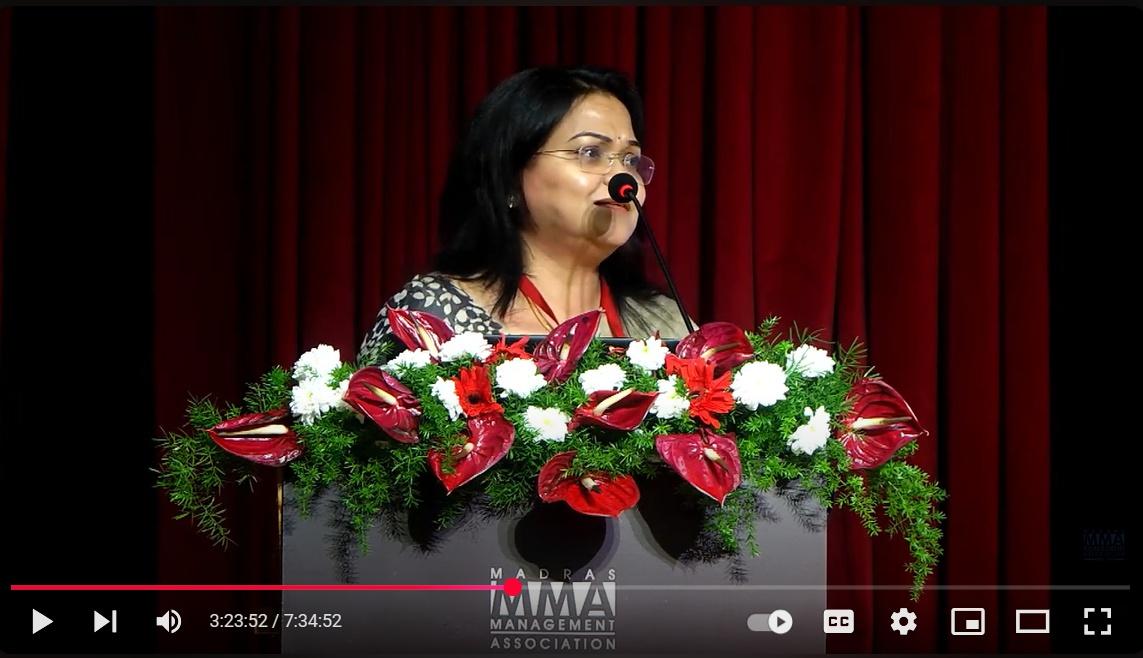
NEED FOR SELF-AWARENESS
First and foremost, you must be self-aware. Second, understand the market and external ecosystem. Third, prepare yourself. I like the concept of Ikigai, the Japanese secret of a joyful life. When your passion, vocation, mission, and profession align, you have a joyful career. I love interacting with people and am a change agent. I get paid for it and promoted for it in my profession. That is what you should aim for and work towards.
At L&T, we always have many interns working with us. I asked them what they need. They said, "We need jobs. When we look at company websites, they look like black boxes. We don't know where to search." I asked them, "What is it that you want to do?" Then they started introspecting. Understand your key drivers. Is it money or a large brand that you want to work for?
I wanted to start in a large, well-known organisation. Introspect on your strengths and
Understand the sunrise and sunset industries. Look for the job and brand that resonate with you. We have large and medium-sized organisations, family-run businesses, and startups.
weaknesses not just technical skills but also soft skills. When we hire freshers, we look for attitude and teamwork. Do they have curiosity? Can they stretch? Remember, organisations will have people from multiple generations. You have to align with your bosses. Speak up with respect. Familiarize yourself with the ecosystem.
Understand the sunrise and sunset industries. Look for the job and brand that resonate with you. We have large and medium-sized organisations, familyrun businesses, and startups. Find out the genre of the company and if it aligns with you. In large organisations, systems are well-established. You just join and plug and play. If you are a free-thinker and want to innovate, maybe a startup is better suited for you.
The stage in which the organisation is defines the competencies needed. The ability to handle ambiguity is necessary for a startup. One of the jobs I applied for rejected me because they did a psychometric test and said, "You are a perfectionist. You will find our job frustrating." So, understanding oneself and getting into the right organisation is critical.
THE POWER OF NETWORKING
Next comes lead generation and job search. How
Do not make your profile more than one or one-and-a-half page. In the covering note, do not repeat what is in the CV. Talk a little bit about yourself in half a page at most.
many of you closely network with your college alumni? Networking is one of the most powerful tools in landing a job of your choice. Connect with your family and friends. Browse company websites and understand what sorts of jobs they offer for freshers. You can also try job fairs and job portals like LinkedIn, Naukri, Shine, Freshersworld, Internshala. Register your profile on these sites and try to get job alerts. Do not use one standard profile for every job. Tailor it to the requirements.
BE MINDFUL OF KEYWORDS
One of my friends’ son won an award in a global AI competition but did not mention it in his CV. Intrigued, I asked him why he did not mention it in his CV. His response was a revelation: "Aunty, if I mention it in my CV, the keyword tracker will pick me as an AI person. What I am looking for is to be a Data Engineer."
Do not make your profile more than one or oneand-a-half page. In the covering note, do not repeat what is in the CV. Talk a little bit about yourself in half a page at most. Highlight your achievements and leadership roles. When you attend the interview, be well-prepared. Research the organisation. Have an elevator pitch about yourself.


